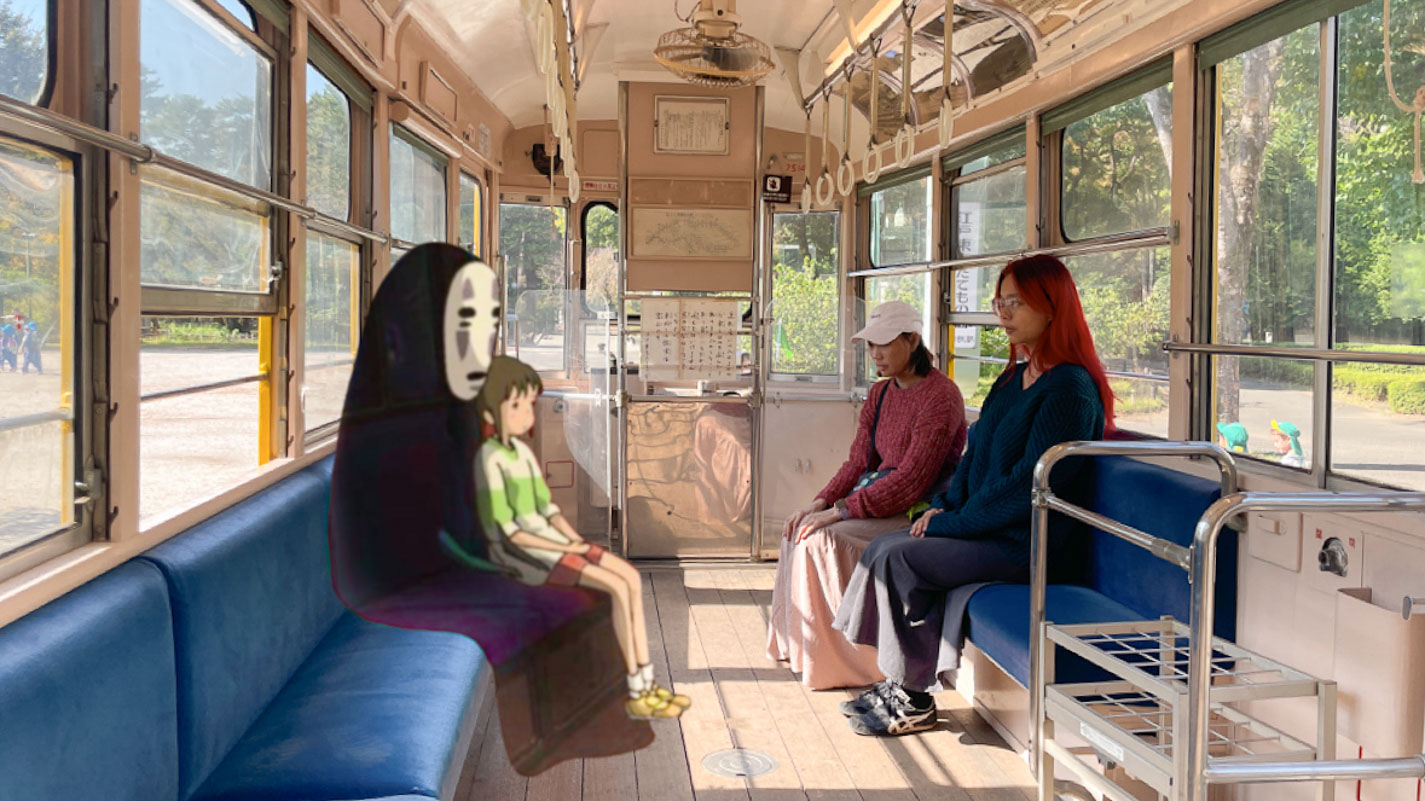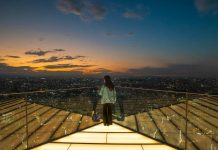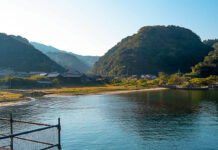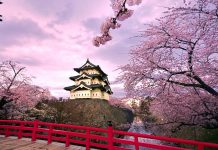This is how you can extract that tender Ghibli happiness for your trip to Tokyo, without involving anything directly Ghibli-themed.
Ghibli is about that feeling. Think its mesmerising portrayal of our world, mystical yet recognisable. Its poignantly moving soundtracks (glory to Joe Hisaishi). Its gentle, imperfect characters. Its whirlwind, miraculous plotlines.
The enchantment that comes with Ghibli films is complicated to comprehend, let alone replicate.
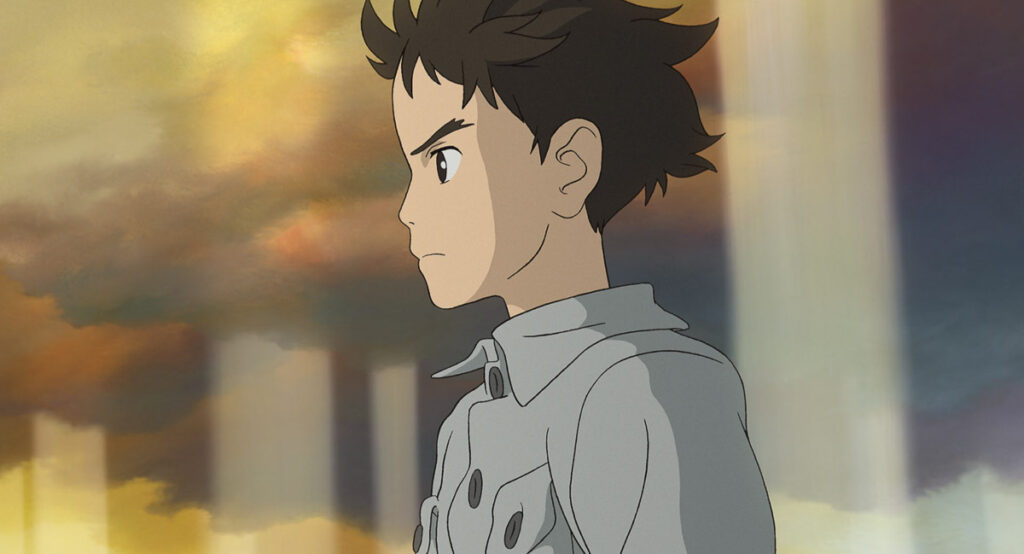
The Boy And The Heron (2023). Photo credit: Studio Ghibli
So how do we weave it into travel? And specifically on a trip to Tokyo — an urban cityscape, where you’d least expect to find Ghibli’s countryside-meets-wonderland charm?
What Is Ghibli Magic?
Upon finishing Ghibli movies, we feel a profound sense of refreshment, as if from revisiting the giddy bliss of childhood. At the same time, there’s an underlying hint of enlightenment, reminiscent of the aftertaste from consuming heavy-hearted poetry.
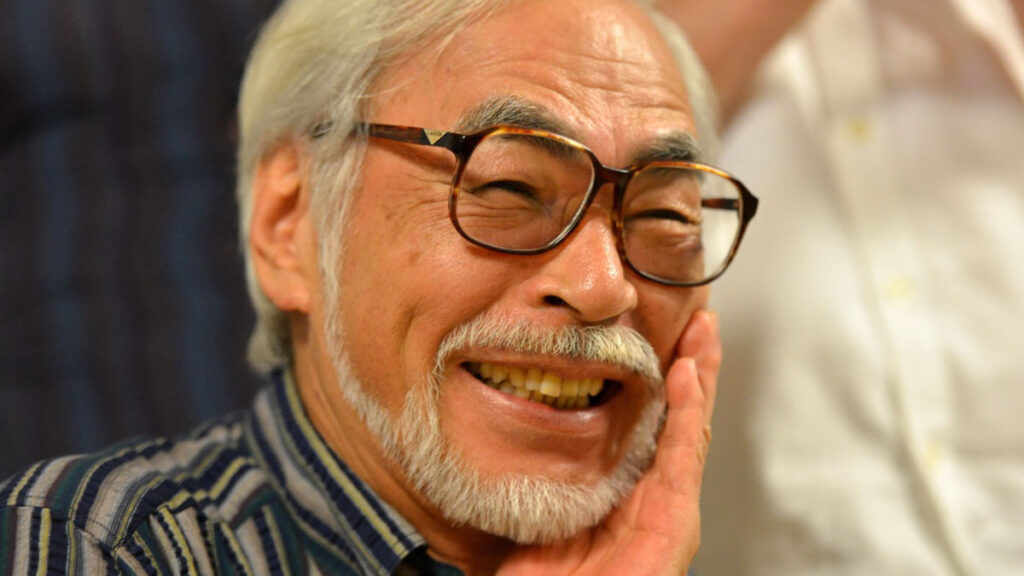
Photo credit: @ghibli-collector via Tumblr
In an attempt to dissect it, I found that there are some recurrent themes throughout Miyazaki’s works:
– a closeness and deep appreciation for nature (paired with a rejection of modernisation),
– a willingness to romanticise mundanity (while taking things slow),
– a bravery to explore and trust new people (and making friends out of them),
– and most importantly, to fulfil this all openly, unguarded.
Ghibli movies portray life through this certain wisdom that I’d like to call the Miyazaki Philosophy.
After giving it all some thought, I believe everything boils down to this: deliberately noticing the beauty of our world and finding the little joys in everyday life. Realising the comfort and contentment in mundanity. That’s the root of Ghibli magic.
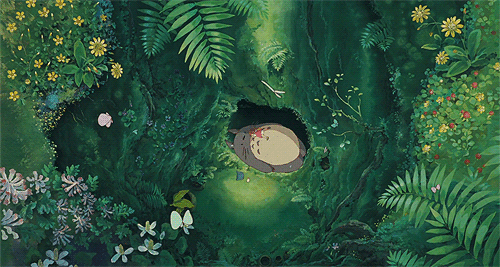
My Neighbour Totoro (1998). Photo credit: ryhope via Tumblr
With that, this is my diary venturing into Tokyo with a Ghibli heart, and a how-to guide for you to experience the same magic (especially if you couldn’t secure tickets to Ghibli Museum or Ghibli Park!)
How to Begin Your Miyazaki-inspired Adventure
“Stop trying. Take long walks. Look at the scenery. Doze off at noon. Don’t even think about flying. And then, pretty soon, you’ll be flying again.” — Kiki’s Delivery Service (2002)
Curate a Ghibli playlist
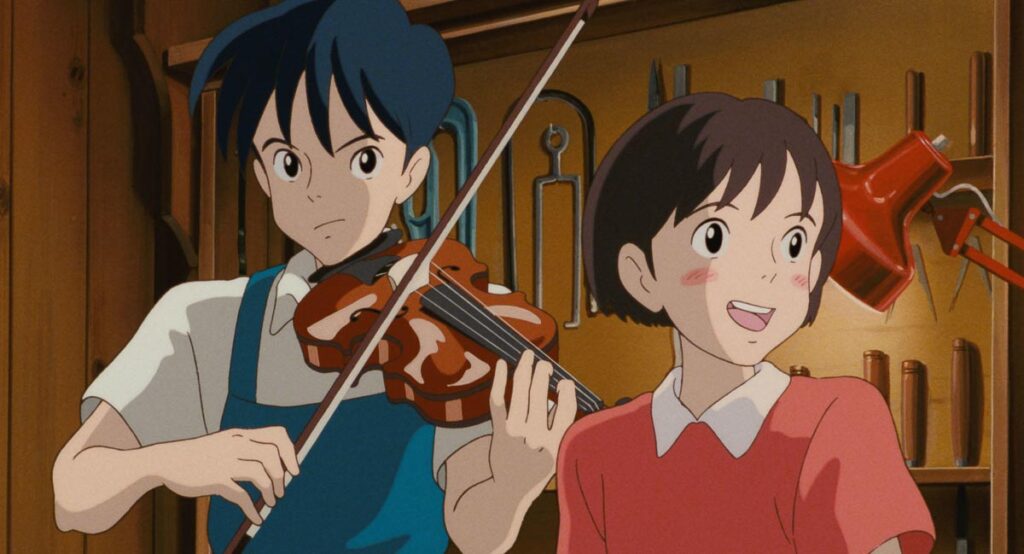
Whisper Of The Heart (1995). Photo credit: Studio Ghibli
Did you know that your auditory memory is stronger than your ability to retain visual information? Music has such a strong hold on our mood. To scientifically enhance the Ghibli-ness of your experience, curate a playlist for it!
When making mine, I went beyond Ghibli soundtracks and also chose other songs that made me feel a similar way. This playlist can be in the background throughout your trip — when you’re commuting, through your morning routine, and whenever you’d like a fresh collection of wholesome, moving music for company.
In the future, anytime you need some Ghibli comfort in your life, this playlist will serve as your personal musical sanctuary. Just let it play, and your brain will associate the sound with that cosy feeling 🎶
Log off
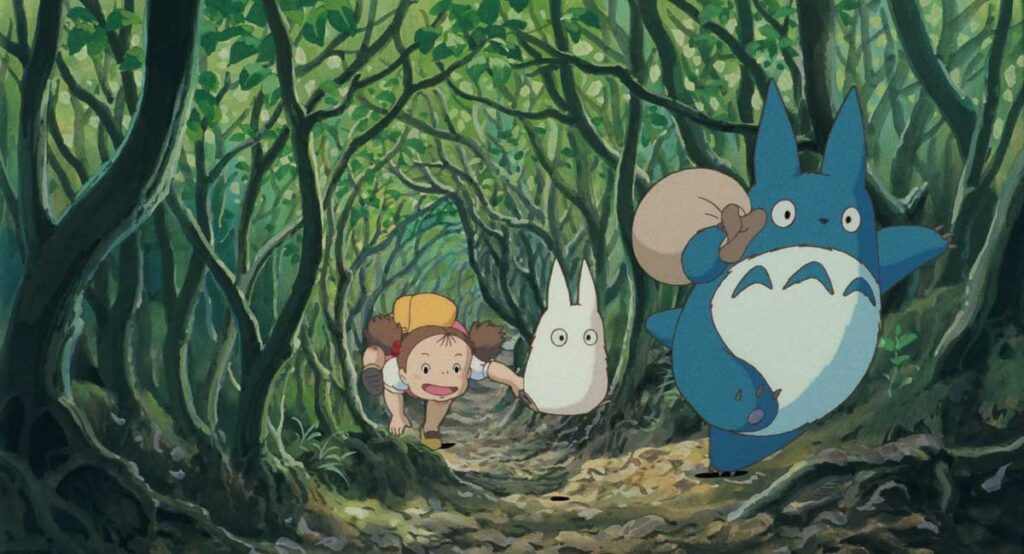
My Neighbour Totoro (1998). Photo credit: Studio Ghibli
Mindfulness is at the heart of Ghibli’s principles.
But mindfulness is rare, considering that every modern person seems to be constantly split between two (or more) places at once nowadays — wherever they are physically, but also on social media.
To be present, I kept away distractions as much as possible, beginning by logging off social media. If it’s more manageable, some people advise to toggle on a black-and-white display so you don’t get hooked, or set a time limit on the app.
I feel it’s important to rinse off everything at the back of your mind to truly appreciate your surroundings and notice the little things. You won’t miss too much in a week (or however long you plan to be away). Close ones can stay in touch through texts and calls!
We’re all overdue for a social media detox, and this makes for a great opportunity.
Pack some art materials
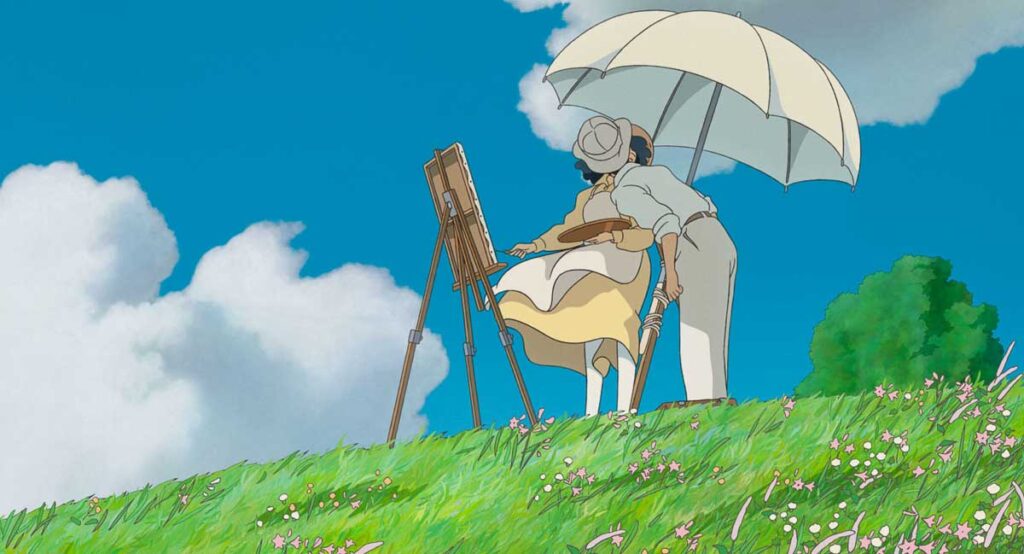
The Wind Rises (2013). Photo credit: Studio Ghibli
Art is defined as something that conveys emotion, and it can take endless forms. It doesn’t have to be anything elaborate, like painting, unless that’s what you’re into. If you’re inclined to just jot a line of thought down on your Notes app, then all you need is your mobile. If you like to doodle, do that. (A TTI Writer once drew out her whole trip in a visual diary! She also made a guide.)
Making art means allowing yourself to be inspired by your everyday life. Personally, I enjoy photography! To capture live sights within the confines of a frame, it takes some careful positioning and thought before pressing down on the shutter. And it immortalises a moment of my perception forever. So for me, this means bringing a camera along.
Things To Do For A Ghibli Experience
1) Befriend Strangers
“Our lives are like the wind… or like sounds. We come into being, resonate with each other… Then fade away.” – Hayao Miyazaki
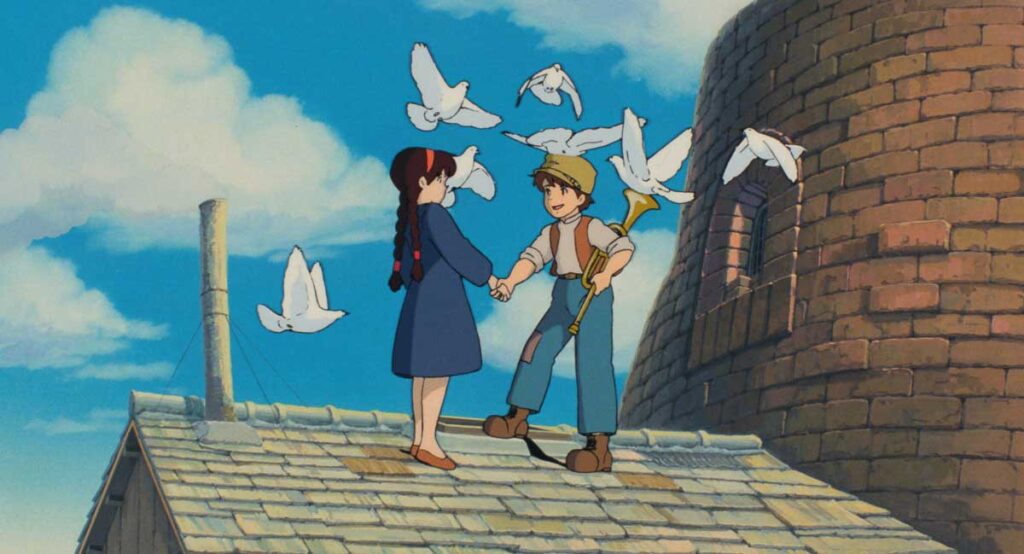
Castle In The Sky (1986). Photo credit: Studio Ghibli
This may seem intimidating, especially if you’re introverted, but just remember this: There’ll be no consequence. Whatever first impression you make won’t matter, because you’ll never see any of these people again. Truly, you have nothing to lose.
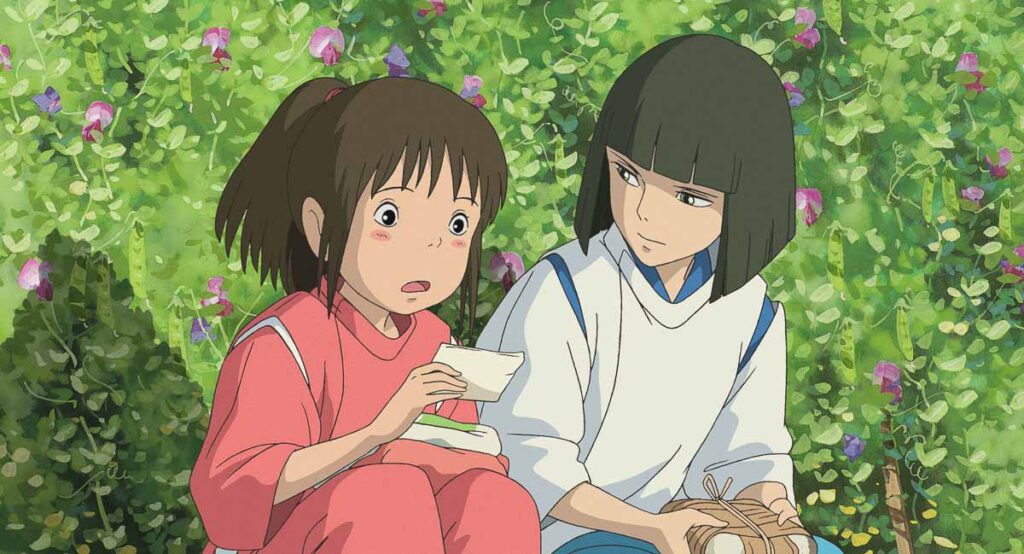
Spirited Away (2001). Photo credit: Studio Ghibli
In every Ghibli movie, the protagonist first meets a stranger, and then the magic happens. It’s really the quirky characters living in Miyazaki’s enchanting worlds that make them so captivating. Chihiro’s memory of the spirit world would be nothing without Haku (Spirited Away, 2001).
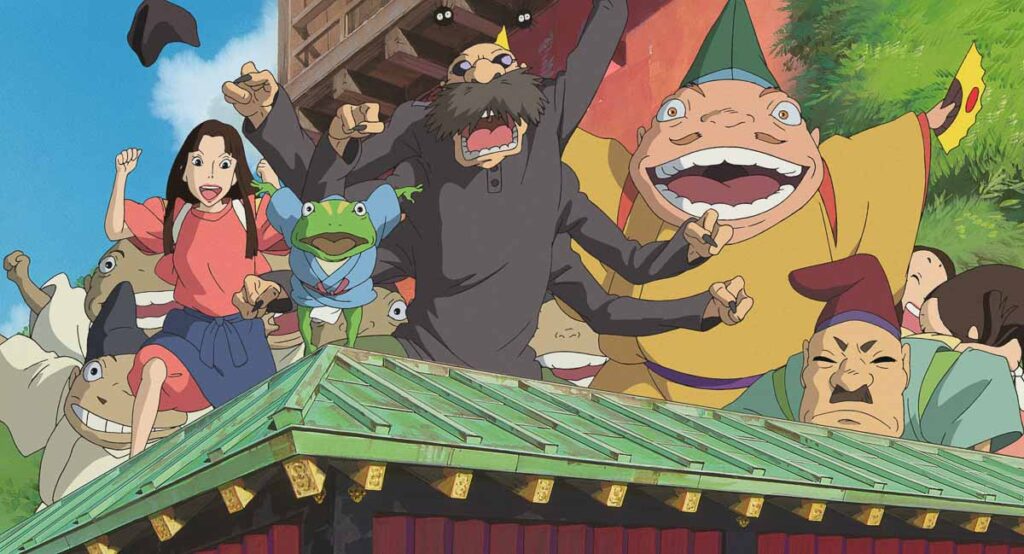
Spirited Away (2001). Photo credit: Studio Ghibli
Personally, I love catching performing arts overseas and making friends with a seatmate. You’ll get to experience the art together in the same place at the same time, which is such a rare and precious human connection to share.
*Pro-tip: For the socially awkward (me), a foolproof way to start a conversation is to clarify directions. For example, if you’re waiting for the train, ask another commuter to confirm you’re going the right way!
Another way is to chat with a service person, such as a barista at a coffee shop, or a gardener at the park. You’ll brighten their time at work.
Namae-no-nai Sushiya — Cheapest and yummiest sushi I’ve tried
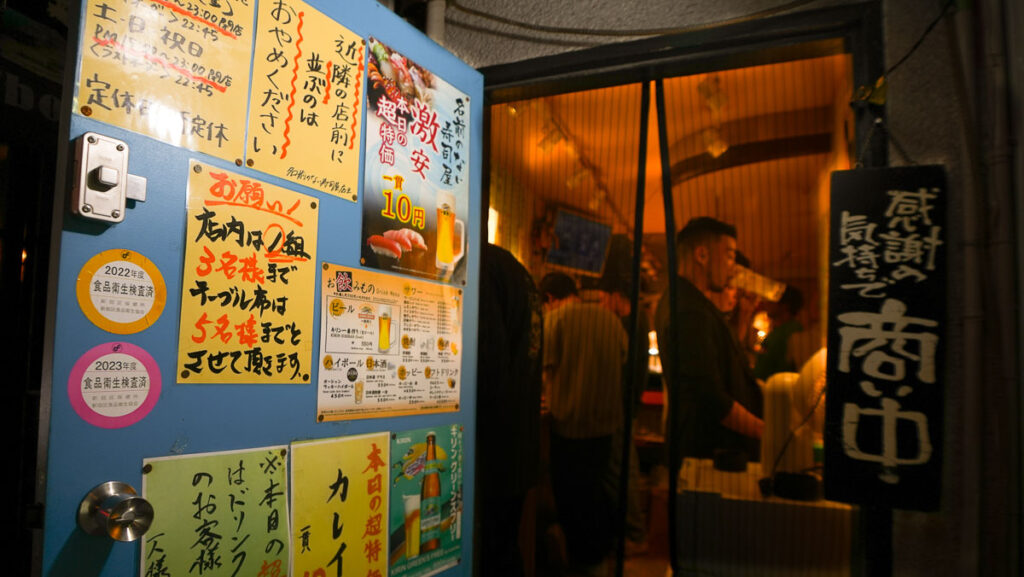
I had lunch at Namaenonaisushiya (translates to no-name-sushi-place), a dingy restaurant hidden away in a Shinjuku alley. It may be precariously situated between a weed shop and a prostitution parlour, but it holds my most cherished memory of my entire trip.
Aside from incredibly cheap (at ¥10/plate!?) and delicious sushi, the real gem is the people running it. Ryohei Torumi, a friendly giant with the most endearing haircut, took our order and patiently communicated with us in English.
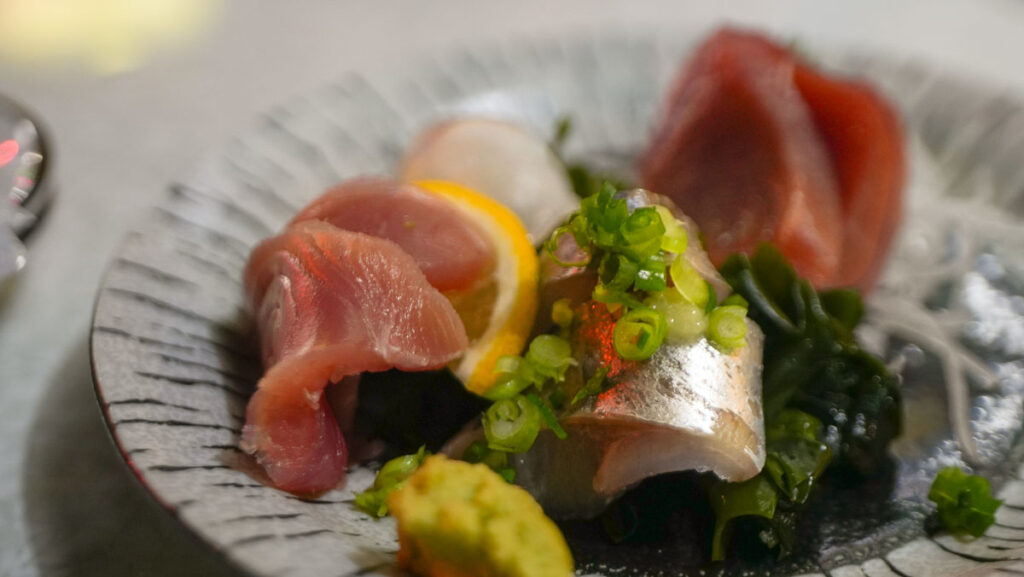
I was curious as to how the place stays afloat despite its criminally friendly prices, and why it chooses to charge so selflessly when the quality of food is sky-high. So I mustered up some courage and went to ask.
It began with rocky small talk (“How long have you been working here?” “Five years!” “Wow, that’s a long time!”) but soon the half-speaking-half-typing-in-Google-Translate conversation flowed, and I found the right time to ask.
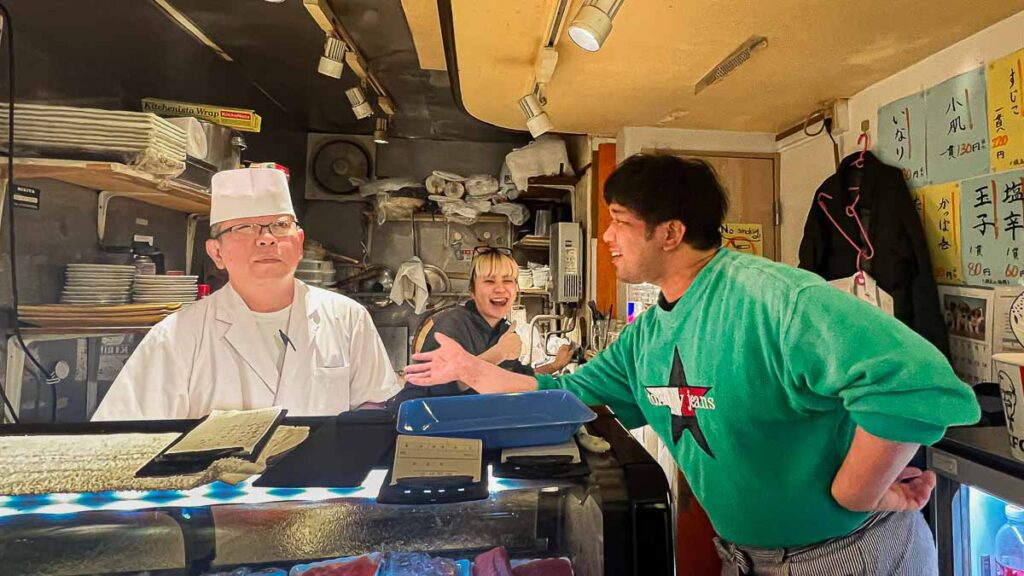
Left to right: Master Taira (chef/owner), Mitzki, Ryohei
In response, Ryohei happily introduced us to the chef, Yosinori Taira. At 55 years old, Master Taira has devoted three-fifths of his life to sushi-making. He was a humble man of few words about the subject, but another coworker chimed in.
Her name is Mitzki, and I remember her by her blunt bangs and blinged grill. She and Ryohei shared that Master Taira can afford the business because he’s friends with fishermen, hence they receive stock directly and inexpensively. As to why he doesn’t take advantage to earn a profit, they tenderly said it was because he was kind.
Needless to say, Namaenonaisushiya has my heart. (And my stomach, but that’s saying the same thing.)
Opening hours: 5PM – 11:30PM, closed on Mon
How to get there: 9min walk from Shinjuku Station (Google Maps)
2) Savour the Art of Mundanity
“Utopia exists only in one’s childhood life.” – Hayao Miyazaki
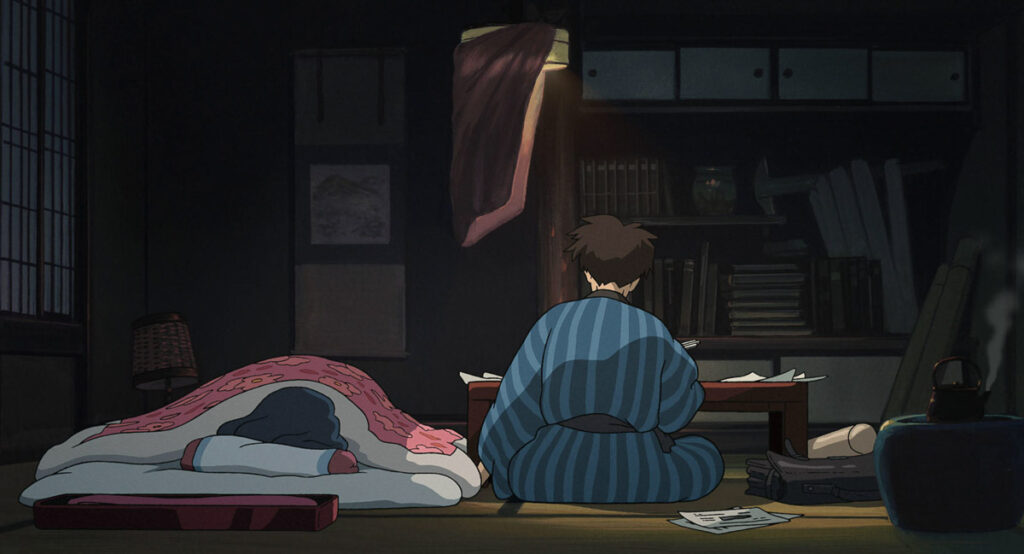
The Wind Rises (2013). Photo credit: Studio Ghibli
If there’s anything Ghibli does well, it’s how its artists make everything look breathtaking. And they do so without straying too far from the state of our everyday world, using mellow colour palettes and simple illustration techniques.
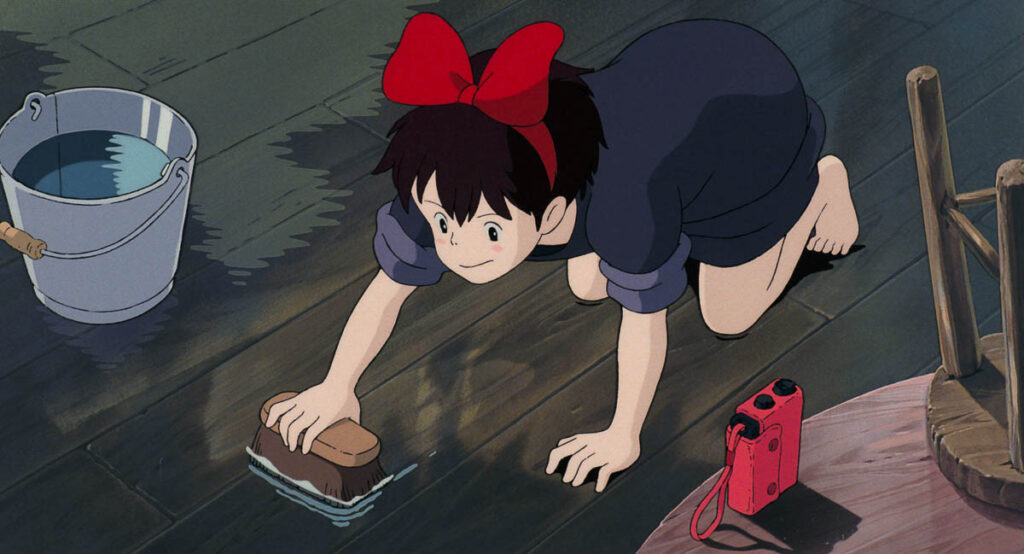
Kiki’s Delivery Service (1989). Photo credit: Studio Ghibli
Miyazaki remembers a time before the rush of routine swept us up and took away our recognition for extraordinary little things. This is where the secret lies — he brings us back to our childhood.
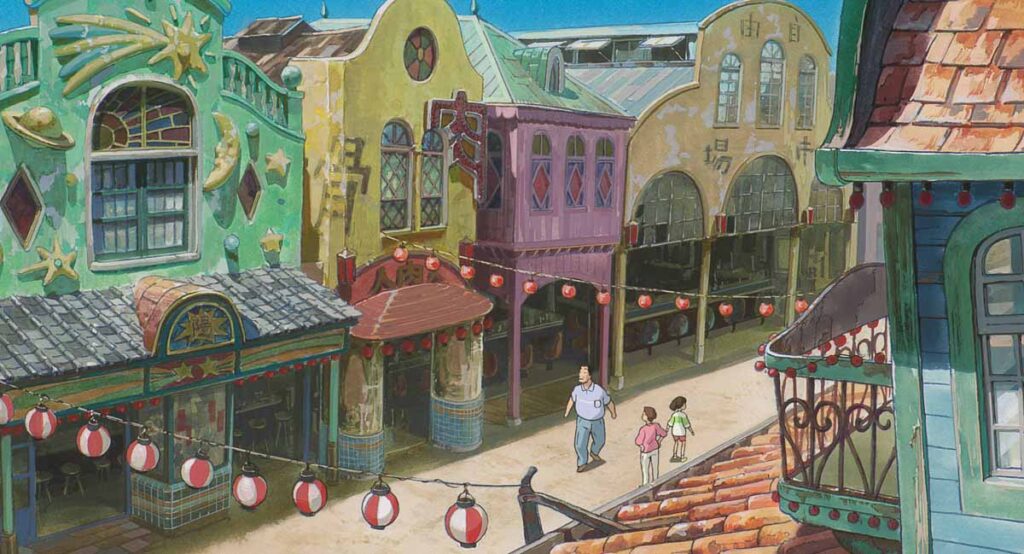
Spirited Away (2001). Photo credit: Studio Ghibli
He realises that children see the world for its most honest beauty, and so he shapes his films around a child’s perspective. That’s how Miyazaki’s characters always notice these wondrous sights, and take us along to see them (Spirited Away is a sterling example).
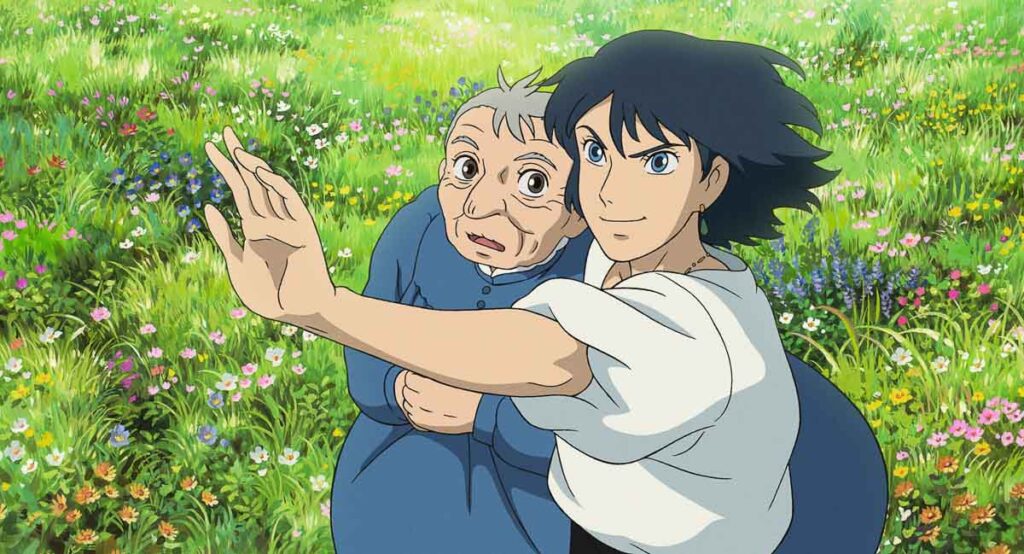
Howl’s Moving Castle (2004). Photo credit: Studio Ghibli
Life roughs us up. The same things we used to stare in awe at, we now don’t even register in our everyday lives. We subconsciously get used to our surroundings, and gradually nothing surprises us anymore.
There may be no way to undo this jadedness that comes with age, but by being aware of this curse, we can intentionally work towards reigniting that curiosity and appreciativeness!
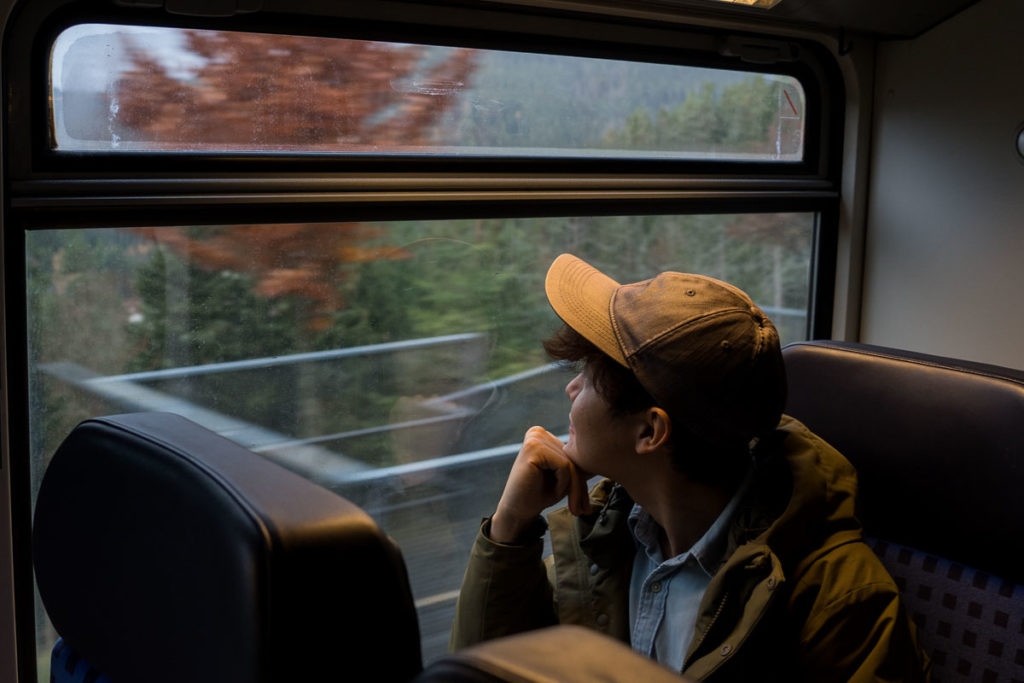
Acknowledge the miracle of everything.
When you’re on a train, look out the window. Isn’t it amazing? That the sky is blue now, that sometimes it’s a riot of oranges and pinks, and other times it’s grey and gifts rainfall.
Listen to the clatter of wheels on railway tracks — even a train ride is a testament to how delicately lucky we are; generations of people had to be at the right place and right time for us to be able to sit here, while simply waiting to arrive at our destination.
Edo-Tokyo Open Air Architectural Museum — Going back in time
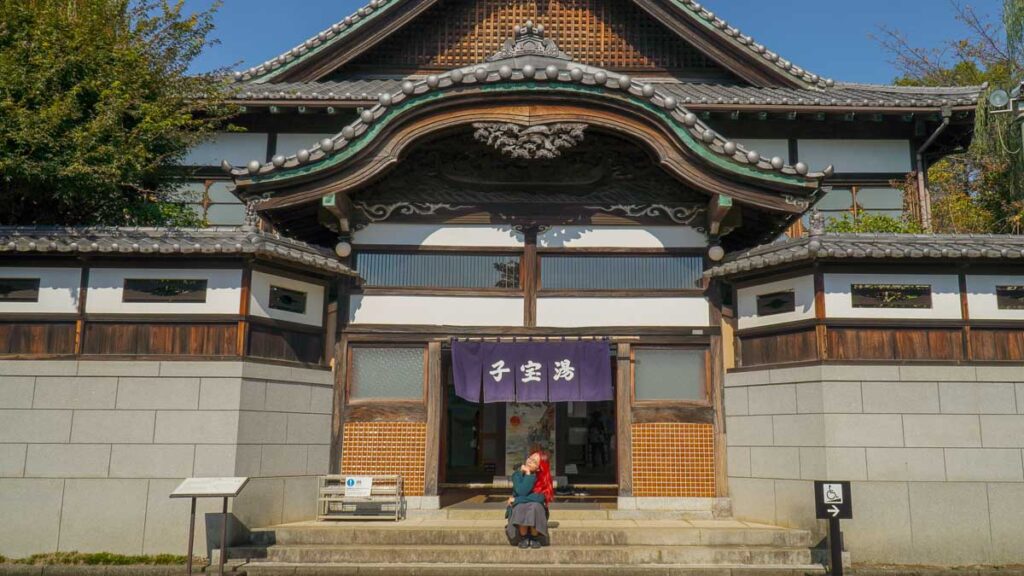
The Edo-Tokyo Open Air Architectural Museum makes this practice easy. The concept is akin to an outdoor museum — it’s a park that holds preserved traditional structures.
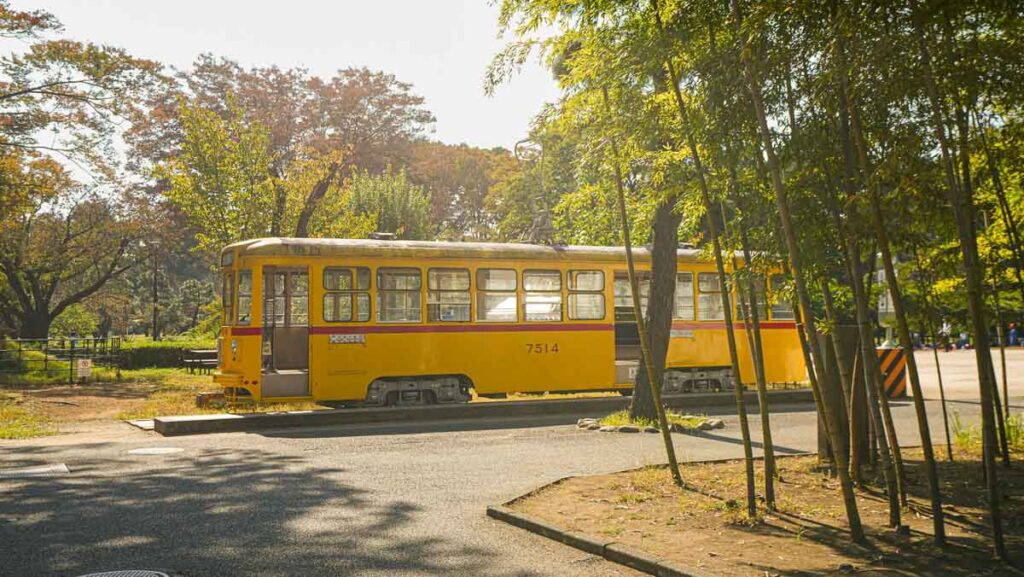
It showcases Tokyo’s centuries-old townscapes, featuring bathhouses, teahouses and even residential homes that were moved or reconstructed for viewing.
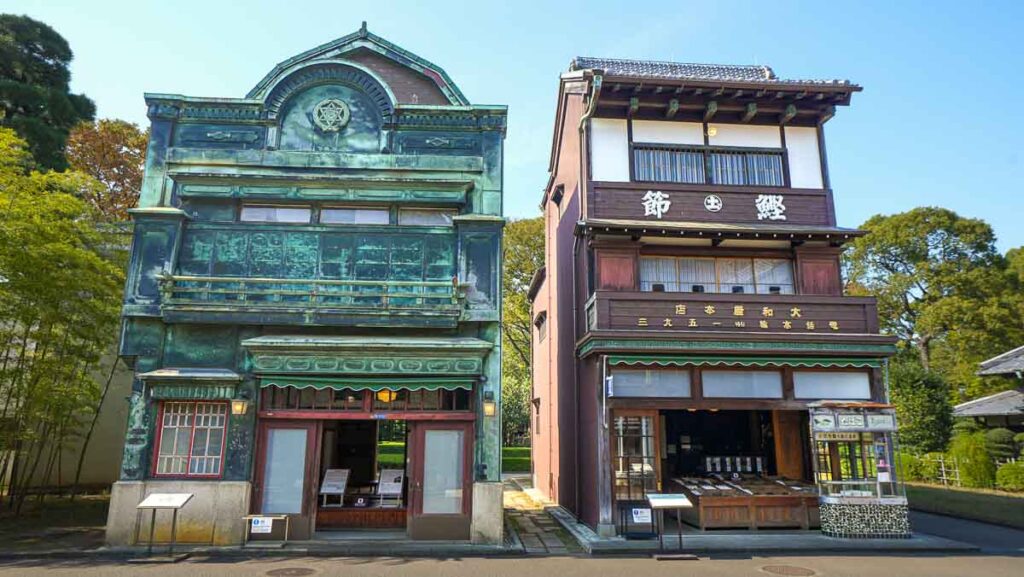
The place almost replicates that rustic, earthly beauty of Ghibli movies. It was fascinating to observe the buildings’ designs and daydream about how people used to use these spaces. I’d never thought of it this way before, but civilisation is such an endearing proof of humanity.
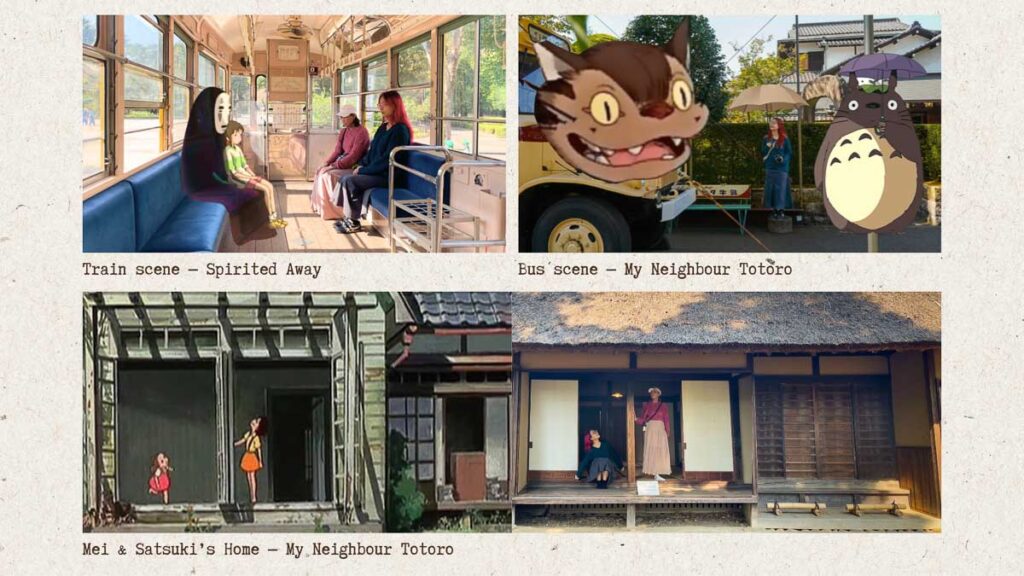
Some moments that reminded us of Ghibli scenes :–)
Entrance fee: ¥400
Opening hours: 9:30AM – 4:30PM, closed on Mon
How to get there: 12-15min bus ride from Musashi Koganei Station (Google Maps)
Meikyoku Kissa Lion — Vinyl with a side of coffee
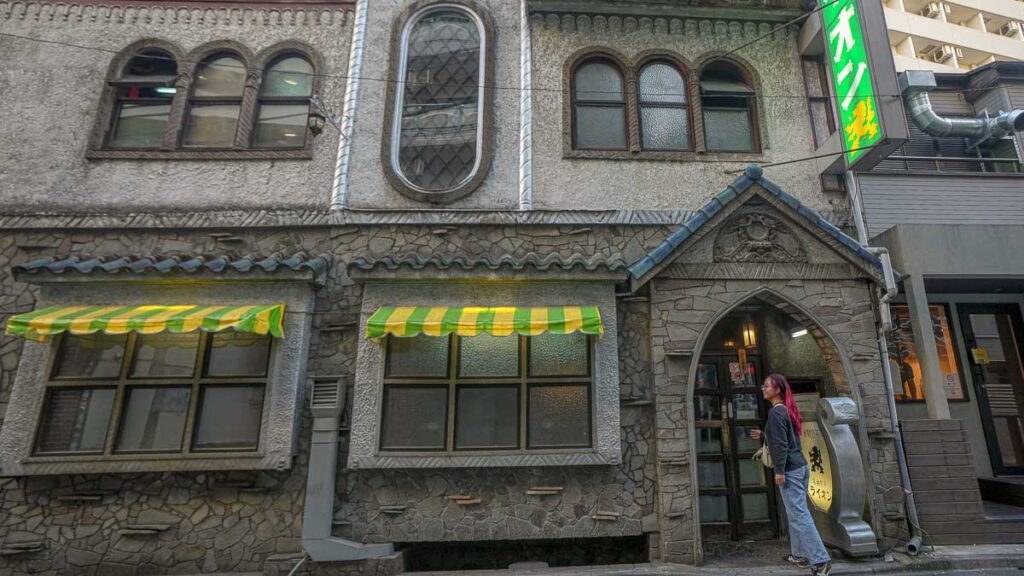
To take it further, you could even record these thoughts and deepen your reflections.
I like to do so with photography and then journaling, but anything goes. Devoting time to appreciate the world and your little life through art may sound silly, but it really is true bliss.
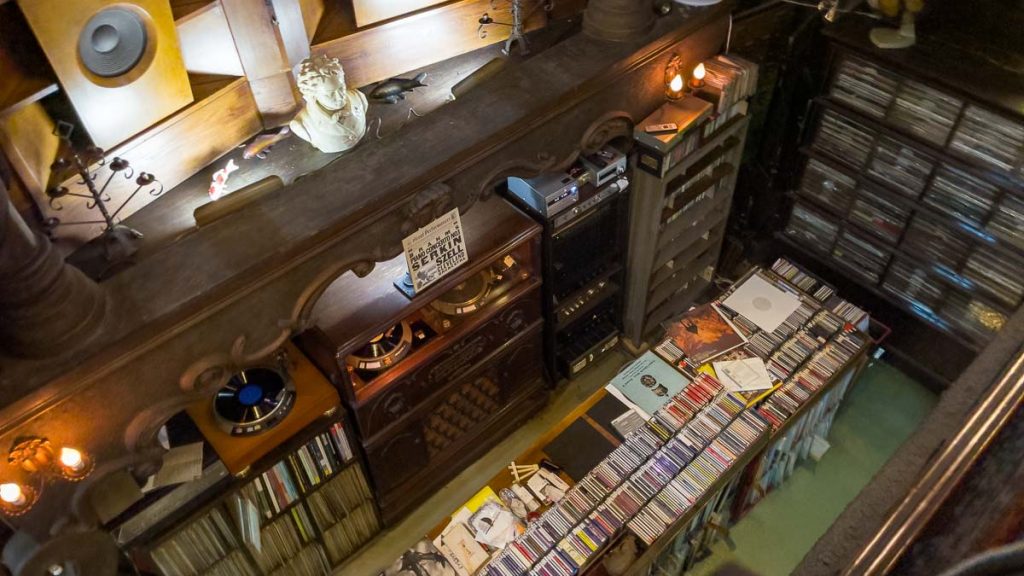
So, I had the loveliest time compiling a digital scrapbook at this beautiful music coffeehouse, Meikyoku Kissa Lion. It’s hard to miss with its architecture evoking the allure of a bygone era, almost fantasy-like by design. ✨☁️
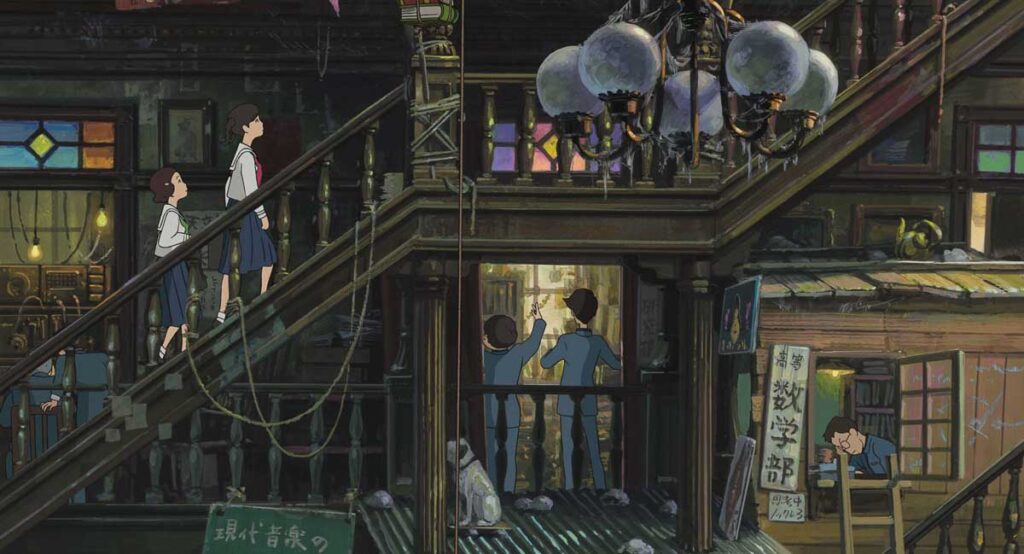
The place reminded me of the boarding house in From Up On Poppy Hill (1963). Photo credit: Studio Ghibli
Right from the doorway, the rich, poetic music made for a flawless serenade that enveloped me in. I felt all tension in my body melt away. We let teatime pass us by here, listening as the vinyl dappled magnificent mid-century classics with a gentle crackling.
Opening hours: 1PM – 8PM
How to get there: Walk 5min from Shibuya Station (Google Maps)
3) Eat Something Wholesome, Somewhere Cozy
“Eat all the food you want. Take naps under the sun. Forget about all your problems.” — The Cat Returns (2002)
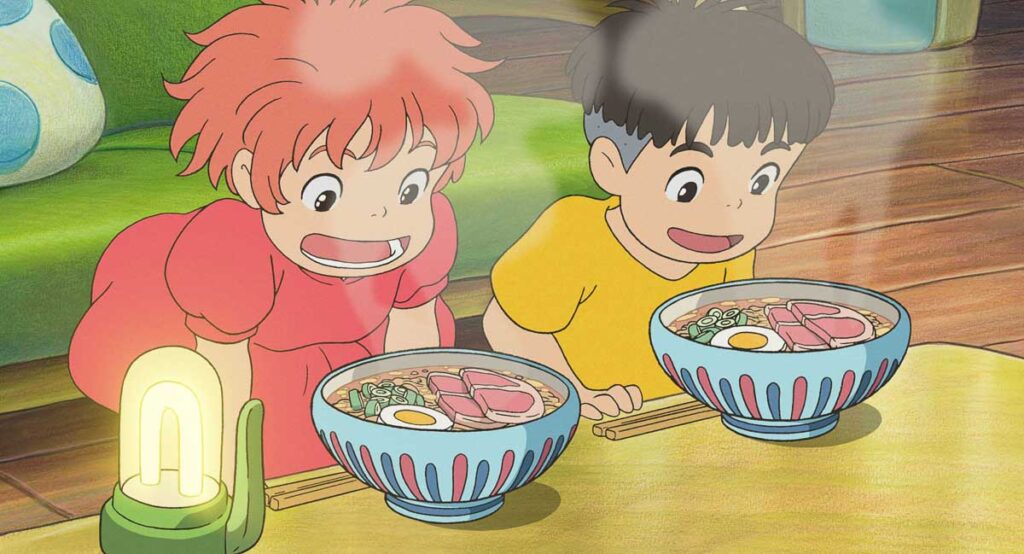
Ponyo (2008). Photo credit: Studio Ghibli
There’s nothing more warm and inviting than a meal in a Ghibli movie. These days, our meals are the first sacrifice when life gets busy.
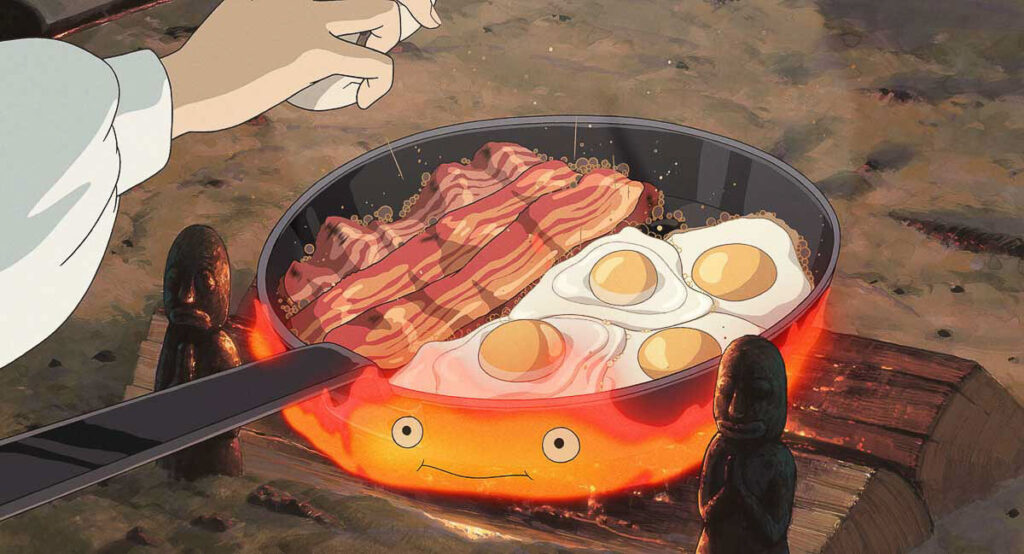
Howl’s Moving Castle (2004). Photo credit: Studio Ghibli
But food goes beyond nourishment — it’s what makes a soul radiant 🎇 Maybe we can’t all cook breakfast for darling Howl with the heat of his own heart, but we can carve out enough time to enjoy some simple eggs and bacon.
Hinadoriyama — Most enchanting meal of my life
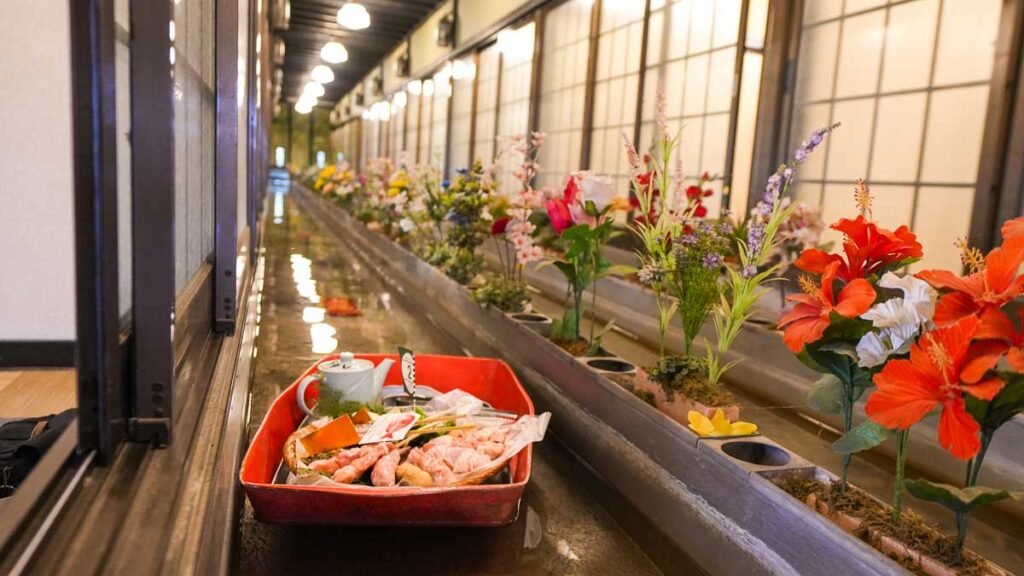
Imagine: Birdsong sounds out, you open the traditional straw doors of your dining room to see dinner floating down a stream towards you, on a mini boat.
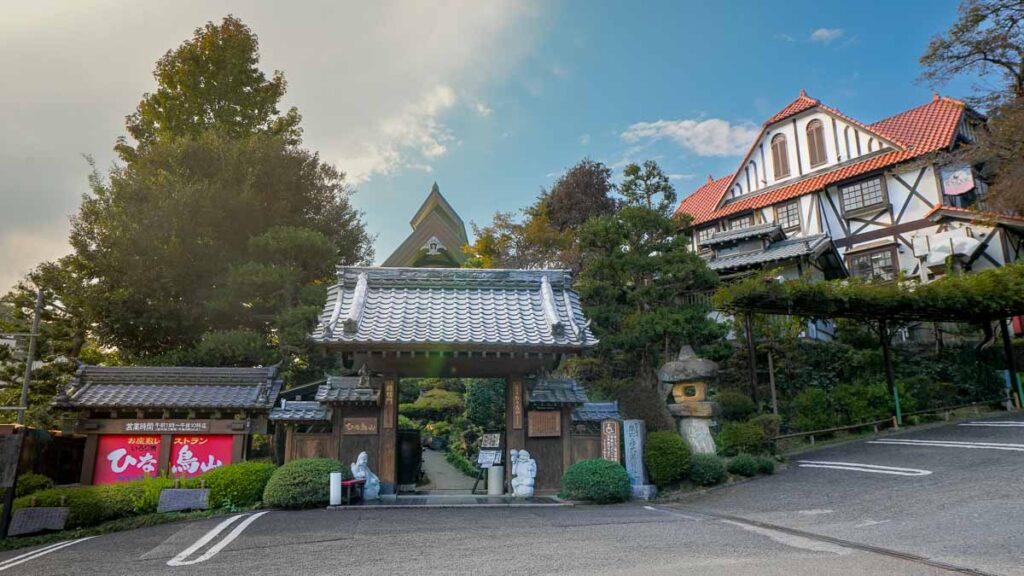
Admittedly, this place is quite a distance out. But throughout the 15-minute walk, I basked in the scenery. We ambled through a serene neighbourhood that resembled Totoro’s — paddy fields and rural homes lined the streets.
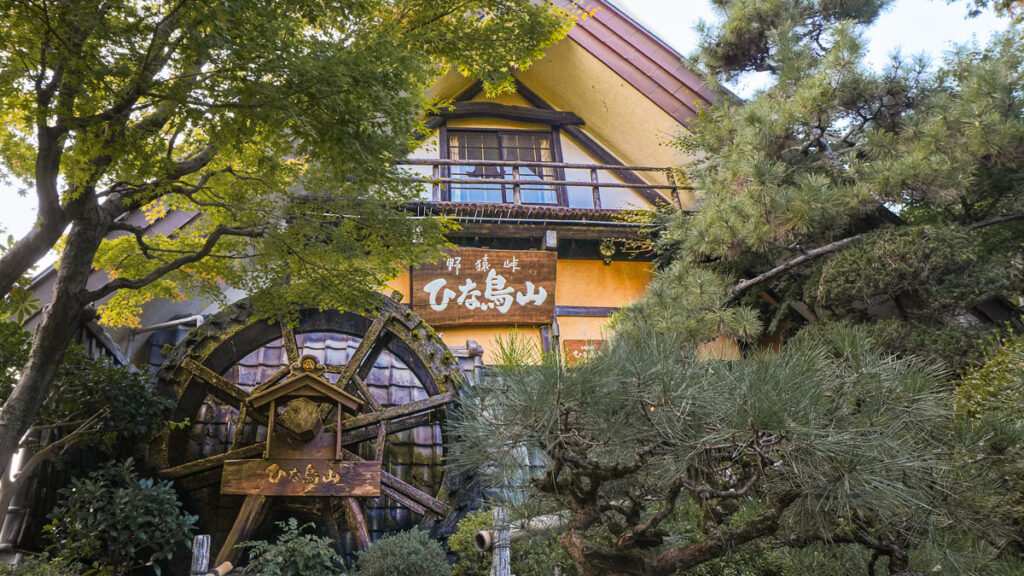
You’ll know you’re there when you hear the soft burbling of water being spun by a watermill. Hinadoriyama has this dreamlike old-world charm, traditional and magical at the same time.
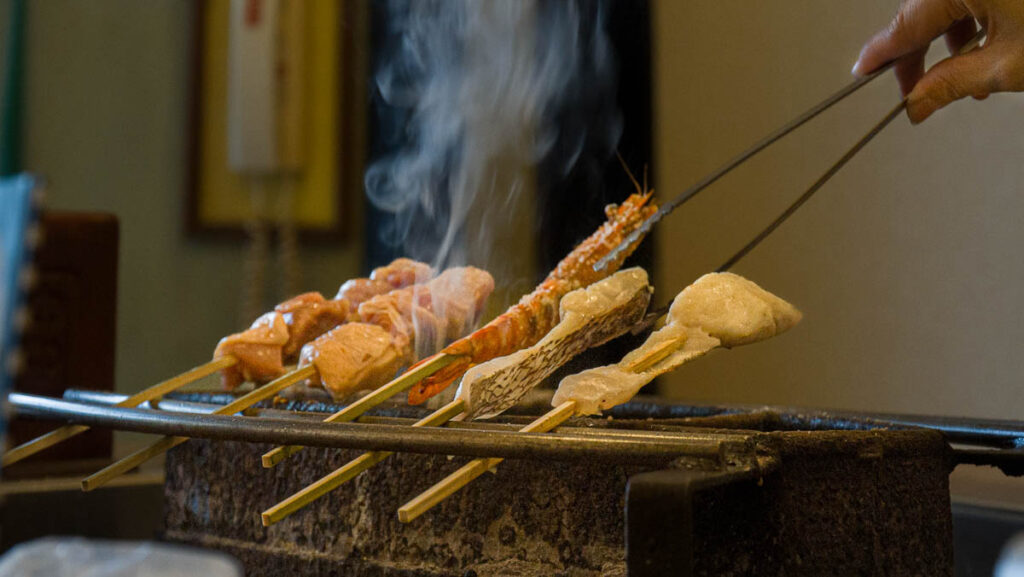
We grilled our skewers over a toasty fire, and the food was the kind of good that had us closing our eyes to fully enjoy it. It was a slow and satisfying meal. Eating well is such a tender way to show care, and you deserve to treat yourself with love like that.
Opening hours: 9AM – 8:30PM
How to get there: 14min walk from Kurimoto-bashi bus stop (Google Maps)
Setagaya Bread Festival — Celebrating my first love
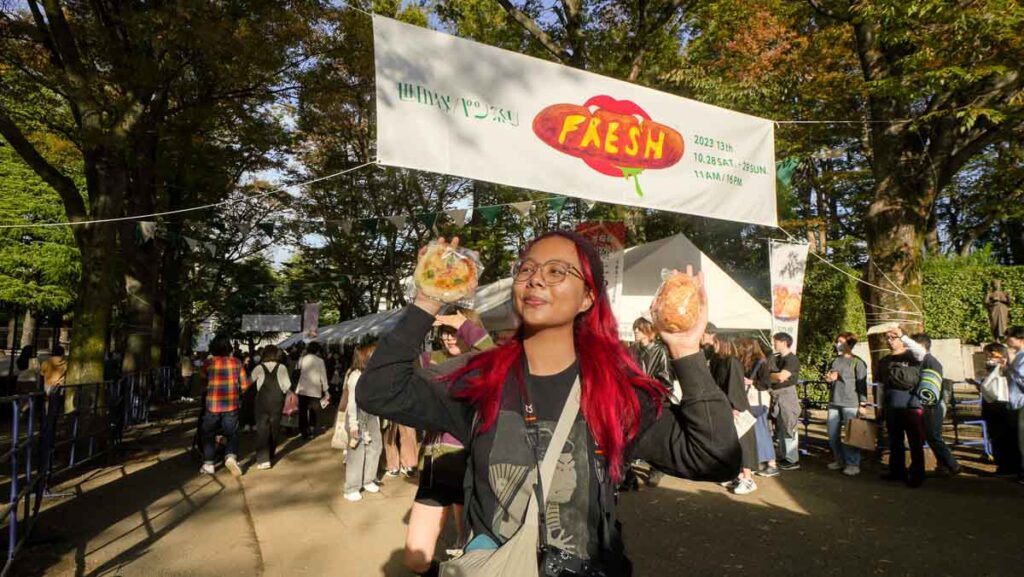
I think my first love may have been bread. When I was younger, my mom would chide me for eating so much bread, saying to stop or else I’d transform into bread myself (“你不要吃太多面包啦,变成面包才知道!”).
Over time though, it inevitably stepped down from being the love of my life, to just a negligible everyday food item.
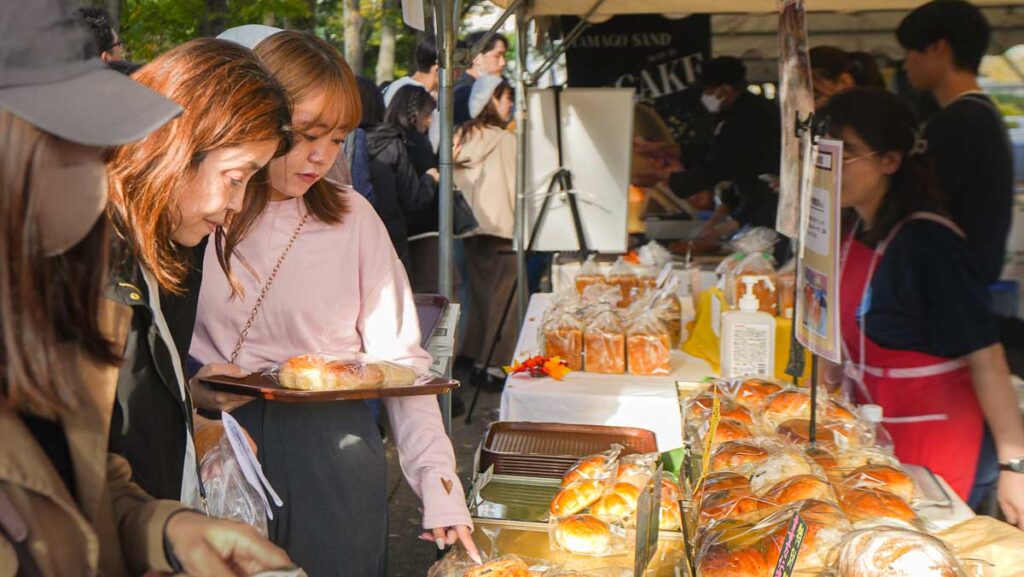
Once a year at Setagaya Park, everyone comes together to celebrate at this grand Bread Festival.*
*It typically takes place late October, but check the website for more accurate details
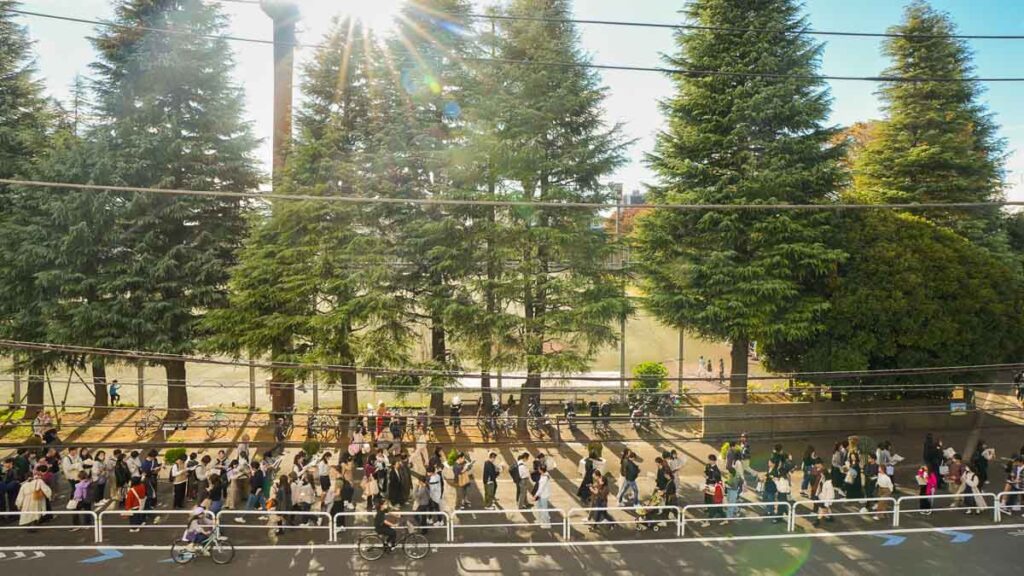
Coming here reminded me how much bread meant to me, laughable as it may sound. It was so fascinating to witness a whole sea of people who took time out of their day to queue up and celebrate something as trivial as bread.
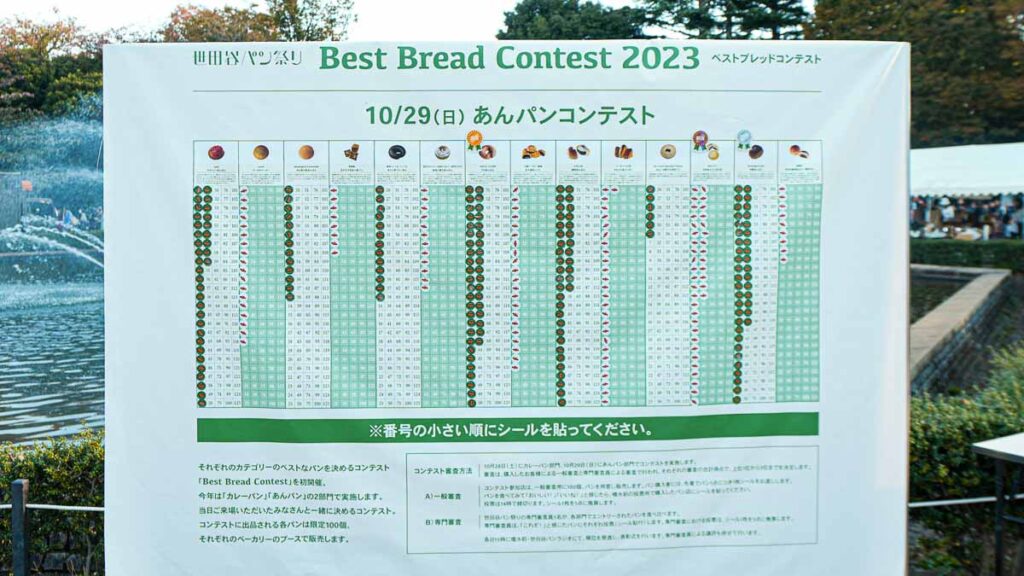
They even hold competitions!
We were all just jolly bread-loving beings, waltzing through a labyrinth of tents.
Each booth housed a generous assortment of baked goods waiting to be enjoyed, and some even had little signs proudly set up that declared the stall a winner in the “Best Bread Contest 2023.”
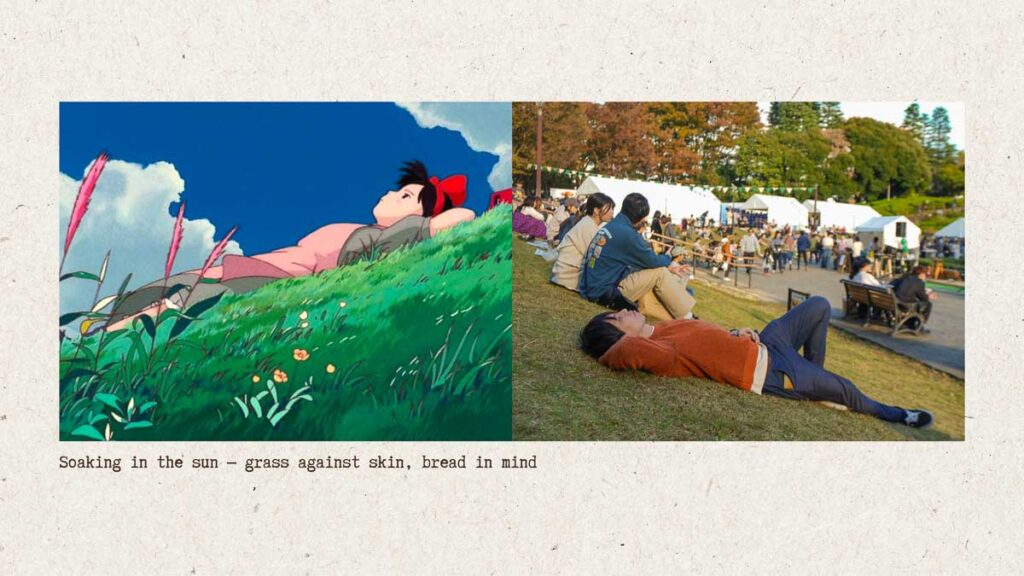
Saw a man relaxing on the lawn, reminded me of a certain young witch who ran a bakery. 🍞🤎
There was a grassy hill surrounding a water fountain where many lounged with their tasty loots. With my earl grey-chocolate bun unwrapped, I found a spot by a tree and made it a temporary haven.
The bun was miraculously dense and fluffy at the same time, and its flavours had me seeing colours.
How to get there: 12min walk from Ikejiri-ōhashi station (Google Maps)
4) Take a Whimsical Approach
“Reality is for people that lack imagination.” – Hayao Miyazaki
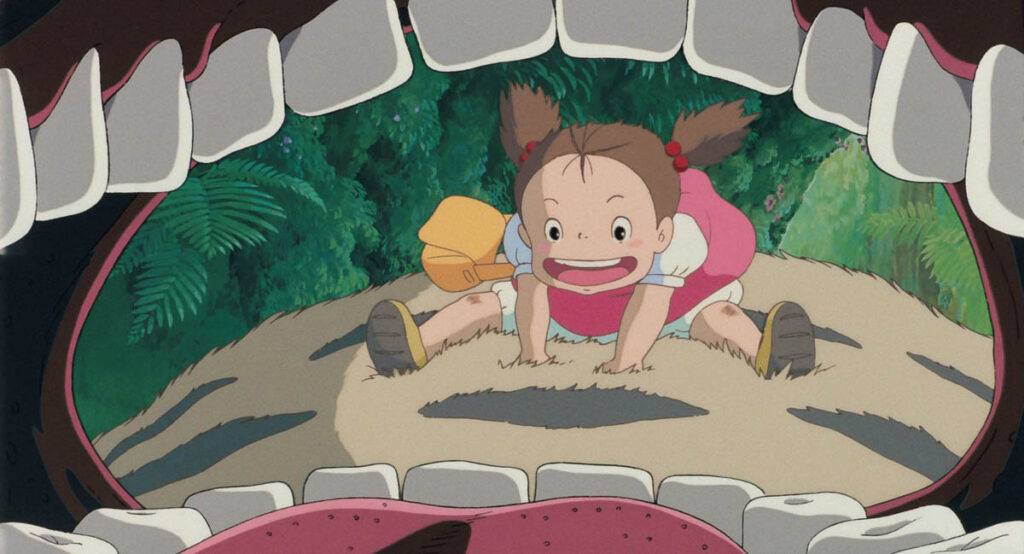
My Neighbour Totoro (1998). Photo credit: Studio Ghibli
When was the last time you wholeheartedly followed your pure curiosity and instinct to lead you towards fun, head-empty?
As kids, we used to invent the silliest ways to while away our time. It was either boredom or hunting joy down, and so we’d chase after joy like there was no tomorrow. Our days were filled with breathless laughter straight from the belly, role-playing characters as far as our imagination would take us, and making up stories about clouds in the sky.
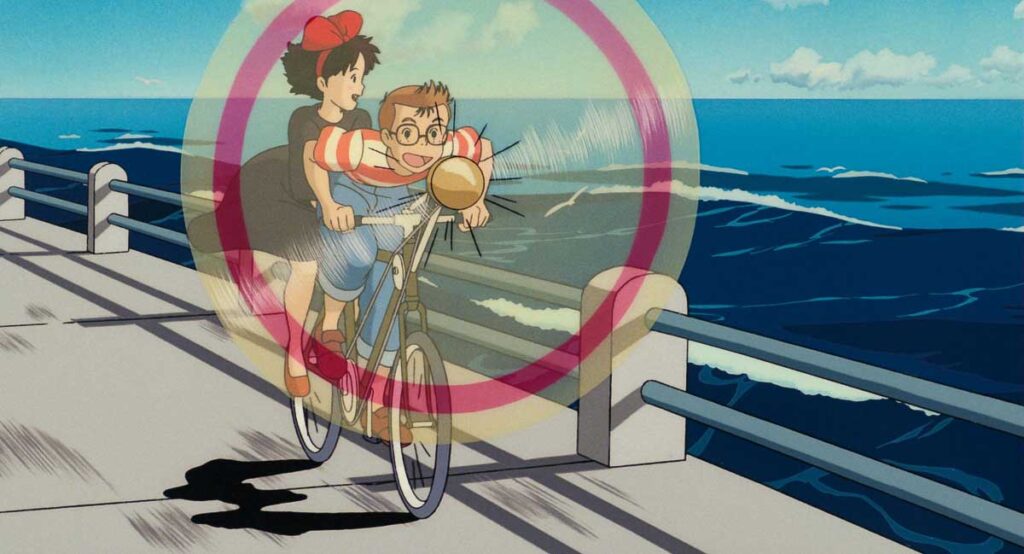
Kiki’s Delivery Service (1989). Photo credit: Studio Ghibli
Now, we have burdensome responsibilities and dreadful expectations to meet, and so we turn to Ghibli movies for an escape. Why not deliberately find fun in our real lives instead?
Ninomiya Amusement Park — Slide with a view of Mount Fuji
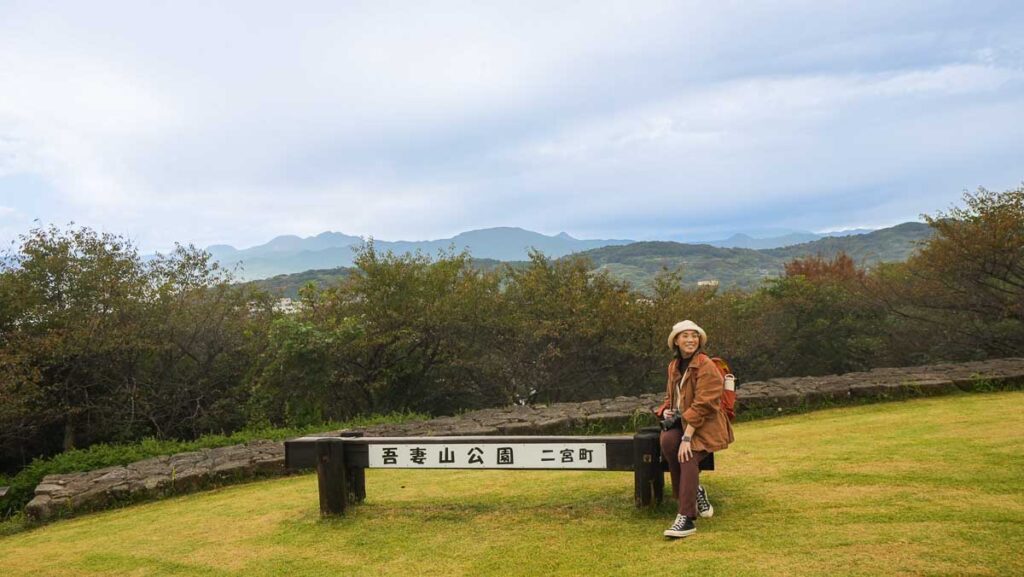
Ninomiya Amusement Park is located atop a grassy hill, where you’ll find an old-school slide against the backdrop of a glittery seascape and lovely mustard fields.
The lawn looked endless and there was no one else around, which made it feel post-apocalyptic, but in a wholesome way instead of creepy. As if the world crashed gently and the quiet had brought much peace and contentment.
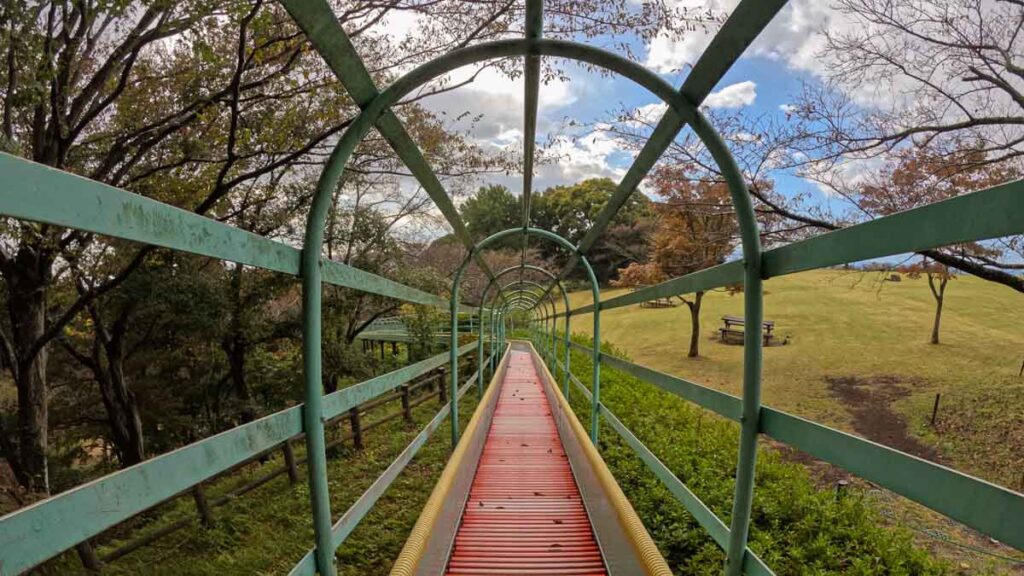
It took some effort to reach the summit (~30-minute hike), but I bet riding down the slide would be worth the way up! Sadly, I wouldn’t know — we didn’t get to try it because it was closed due to rainy weather.
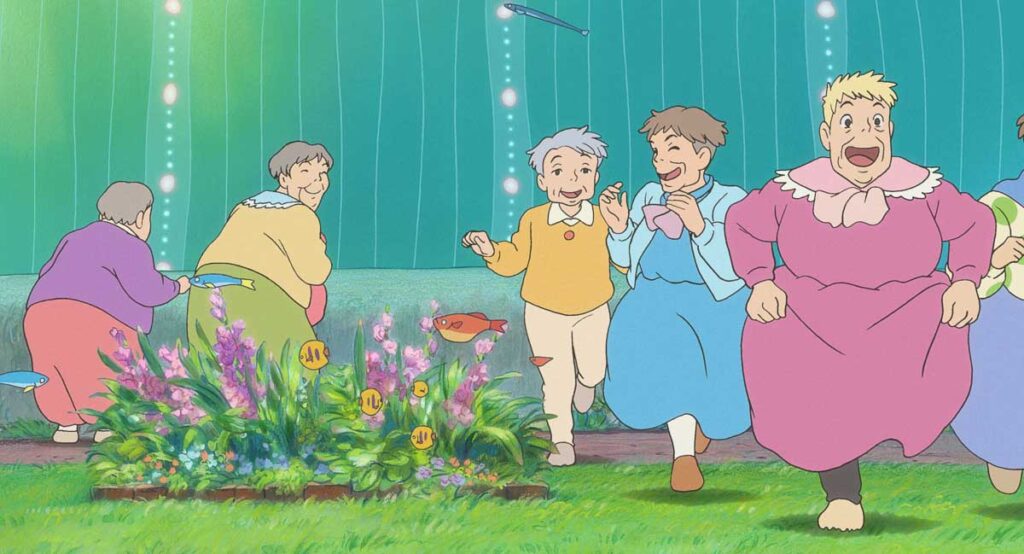
My friends and I giggling away even after retirement, hopefully – Spirited Away (2001). Photo credit: Studio Ghibli
But it’s right up my bucket list to come back with my girlfriends to play on it <3 We’ll also bring up picnic baskets of konbini (convenience store) nibbles and card games. I just know we’ll have the most wonderful time here, chatting and laughing to our heart’s desire as the sun sets 🍃☁️🧺🌄
Entrance fee: Free
Opening hours: 8:30AM – 5PM
How to get there: 10min walk from Ninomiya Station (Google Maps)
Tokyo Dome City — Karaoke on a ferris wheel
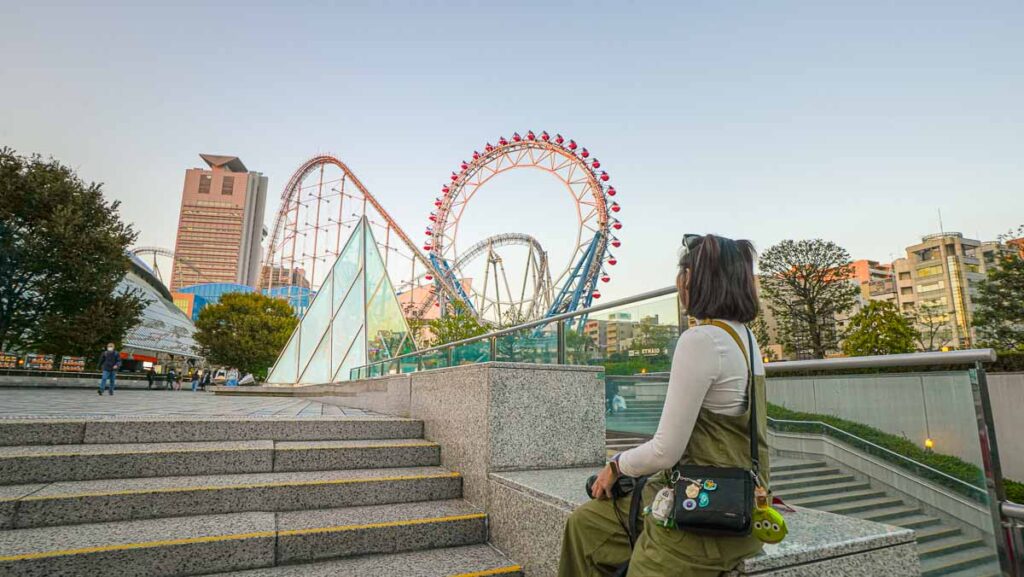
Nothing revives an inner child like karaoke — even better with a bird’s eye view of the city.
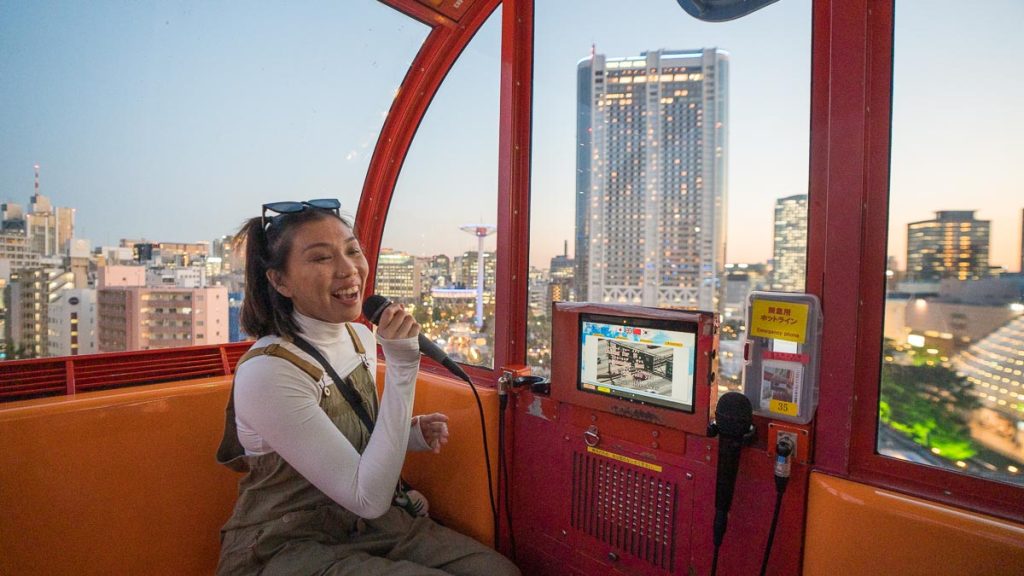
Belting out classics (You are… My FIRE… The one… desiiire…❤️🔥) with the vast twinkling cityscape beneath us had me feeling like I was on top of the world in more ways than one. I can only describe that time suspended in air at Tokyo Dome City as true euphoria.
There are also other theme park attractions to explore, such as roller coaster rides and game stalls.
Entrance fee: ~S$13
Opening hours: 10AM – 9PM
How to get there: 4min walk from Korakuen Station (Google Maps)
5) Embrace Flora and Fauna
“I’d like more of the world to go back to being wild.” – Hayao Miyazaki
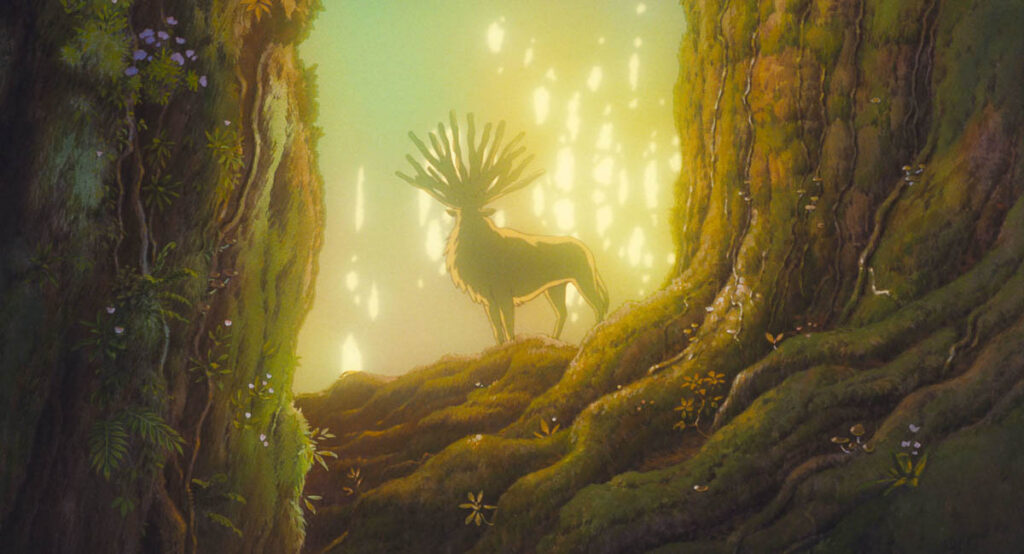
Princess Mononoke (1997). Photo credit: Studio Ghibli
My favourite Ghibli movie has to be Princess Mononoke, and for more reasons than that one San and Ashitaka scene (although it’s quite a significant reason, I can’t lie).
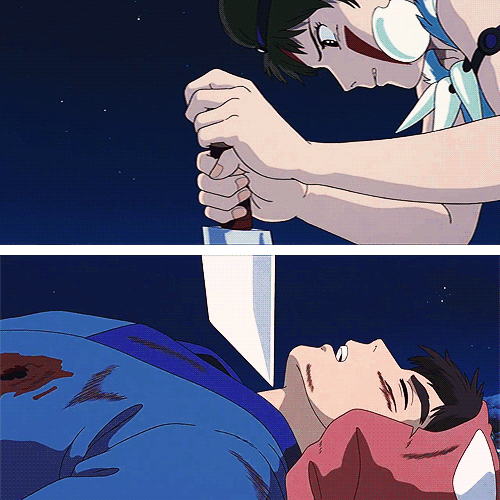
“I’ll cut your throat! That’ll shut you up.” “You’re beautiful.” – Princess Mononoke (1997). Photo credit: Studio Ghibli
Most Ghibli films are more about the experience of watching rather than for a clear message, but Princess Mononoke genuinely opened my eyes to another perspective on the Nature VS Man discourse.
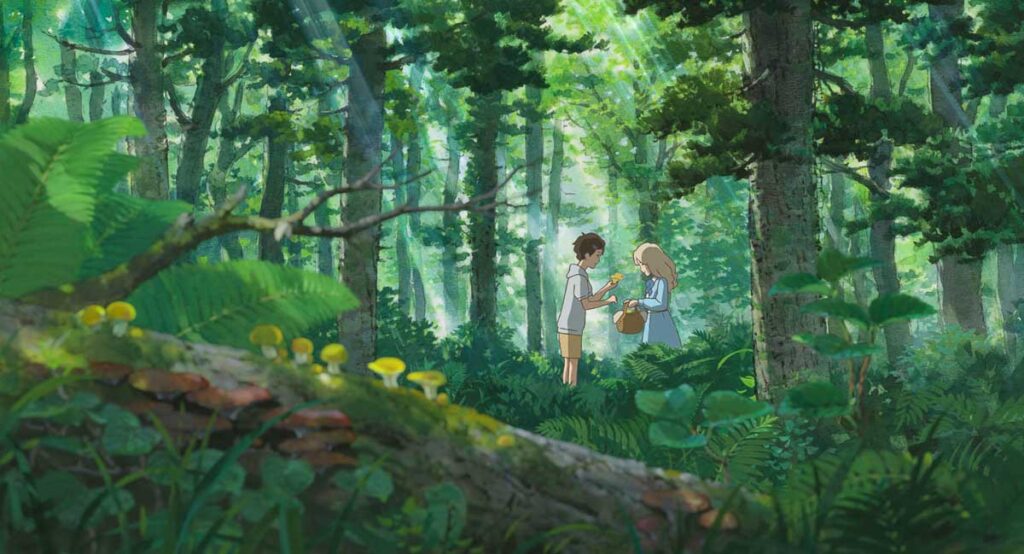
It made me more conscious about the human impact on earth, and how it ruins us in return. Once you see it in Princess Mononoke, you’ll find the subliminal text around nature in every Ghibli movie — even with the most recent The Boy And The Heron (which I caught on opening night, of course!).
Maybe it’s cliché, but it’s undeniable that being around nature can be so healing. We take it for granted too often.
Karuizawa — A day trip out for fresh air
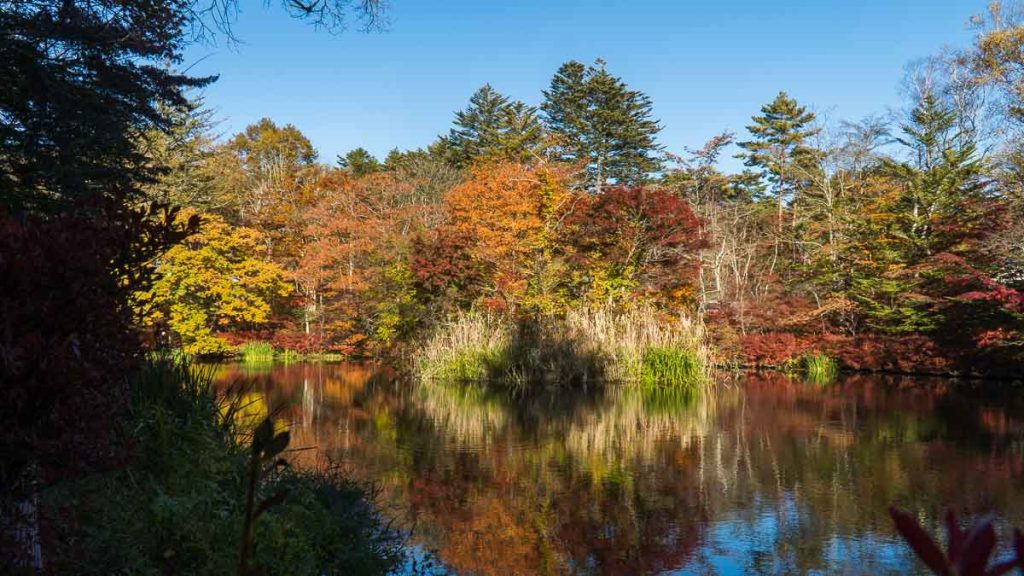
While this is supposed to be a Tokyo itinerary, I found it fitting to embark on a little day trip slightly out of the city. Karuizawa in Nagano is an offbeat prefecture roughly an hour from Tokyo by Shinkansen. 🚃
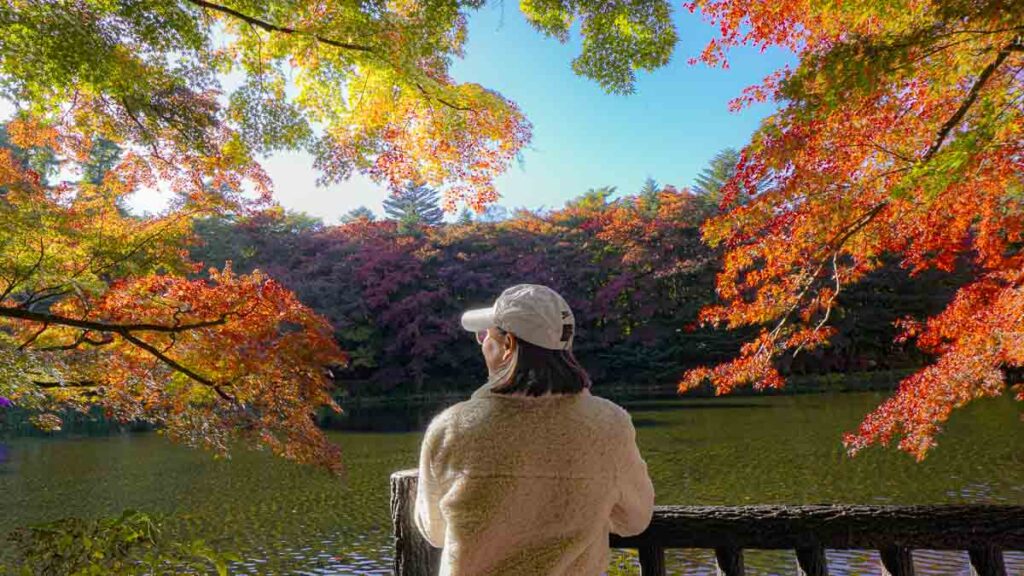
Nothing rivals the sights awaiting at the vast Kumoba Pond. It features a waterfront walkway, where we took a stroll through the leafy eden.
The foliage is most beautiful in Autumn (mid-November to early December), when we visited. The leaves formed a mesmerising tapestry of crimson, gold and amber, while sunlight seeped through the gaps.
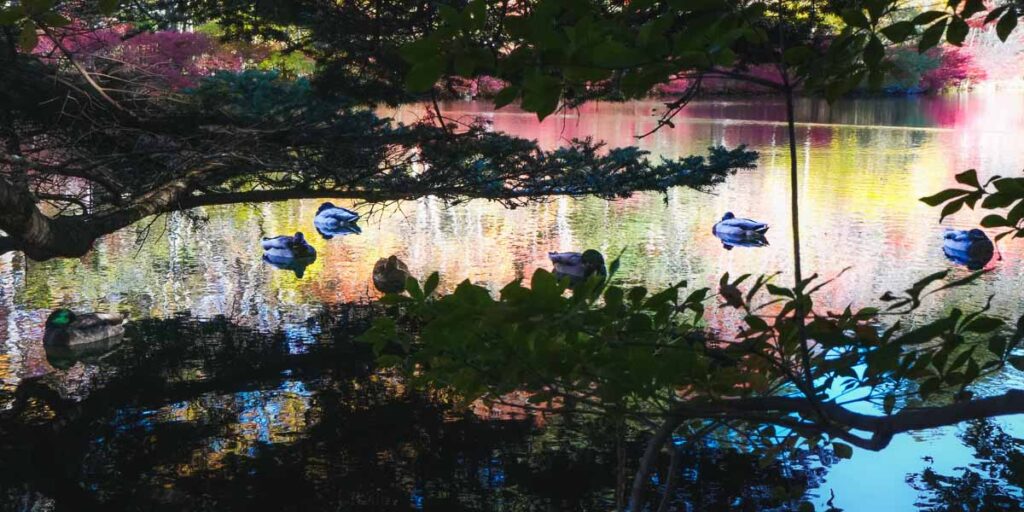
I remember how my heart warmed seeing little ducklings wade across the waters unhurriedly, not a care in the world 🦆 (They also made me think of other cuddly creatures in the Ghibli world, like the soot sprites and hamster in Spirited Away).
Kumoba Pond
Opening hours: 24 hours
How to get there: Take a 5min Seibu Karuizawa Eigyosho bus ride from Karuizawa station to Nozawahara station, walk 7min (Google Maps)
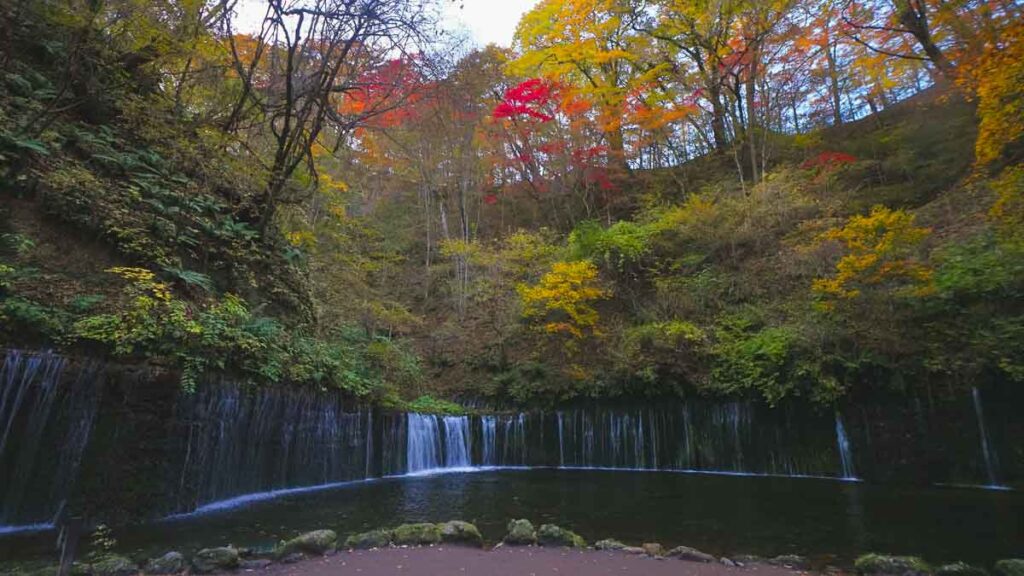
There’s also the Shiraito Falls, named after its waterfalls that flow like threads of silk. I came by when it was getting dark, and there was this contemplative air that set up for hours of pure tranquillity.
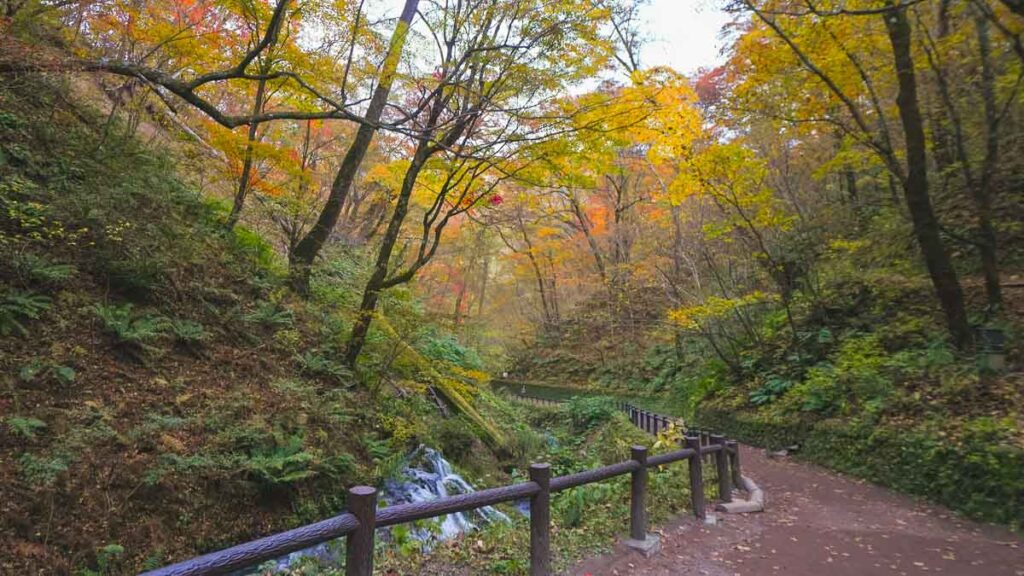
It so happened that it rained on my way back down, which let my imagination soar — I was half convinced that the catbus from Totoro would come to pick me up.
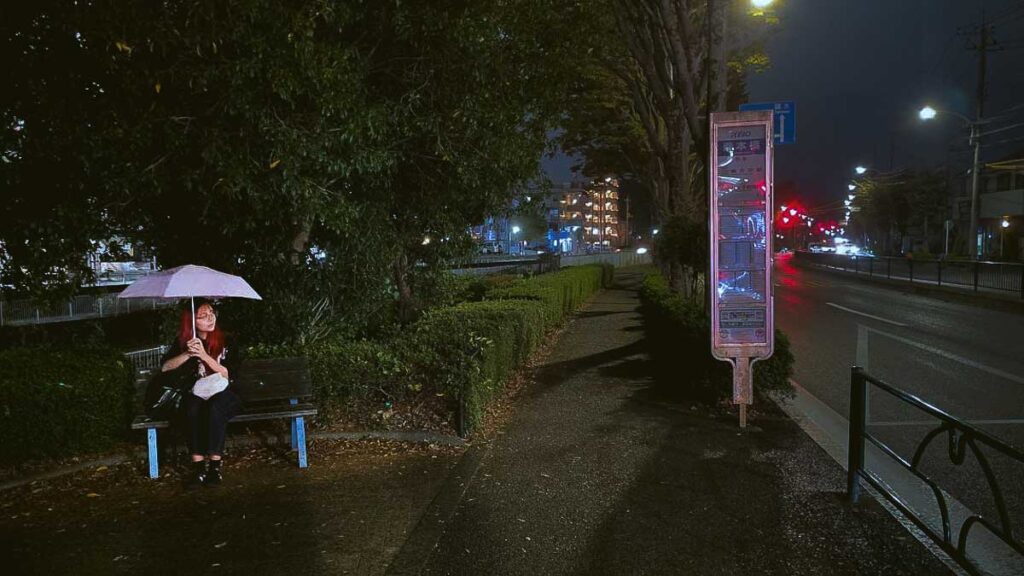
Do you think it’s coming soon? It’s getting late…
Shiraito Falls
Opening hours: 24 hours
How to get there: Take Bus 01/02/08 from Karuizawa station North exit to Shiraitonotaki (Shiraito Waterfall) station, walk 1min (Google Maps)
Seeking Offbeat Ghibli-inspired Hidden Gems in Tokyo
This piece goes out to all Ghibli lovers mourning Hayao Miyazaki’s retirement — the magic doesn’t have to die.
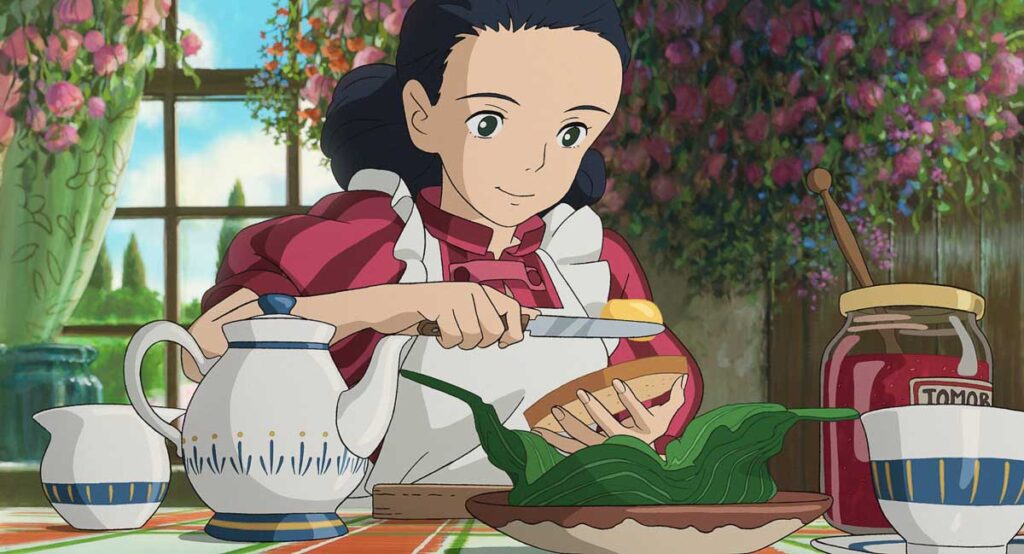
The Boy And The Heron (2023). Photo credit: Studio Ghibli
When Hayao Miyazaki’s (director of Studio Ghibli) announced his final film, The Boy And The Heron, I was torn. On one hand, I felt joy like a sunbeam: For the first time, I’ll experience Ghibli in the cinema. On the other, dread: Is this the last time I’ll ever feel this excitement?
Of course, this isn’t the first time Miyazaki declared a supposed “retirement.” People are starting to lose count. Still, the fear strikes every time. In case he withdraws for good, here I am, finding my own Ghibli magic.
If you wanted to, you could seek that Ghibli feeling consciously, instead of having it fall from the sky — watching a Ghibli movie or visiting a Ghibli attraction is not the only way to experience this feeling. It’s almost unfathomable that it’s this accessible, this simple, this cheesy. But it’s true, you could apply the Miyazaki Philosophy anywhere and anytime.
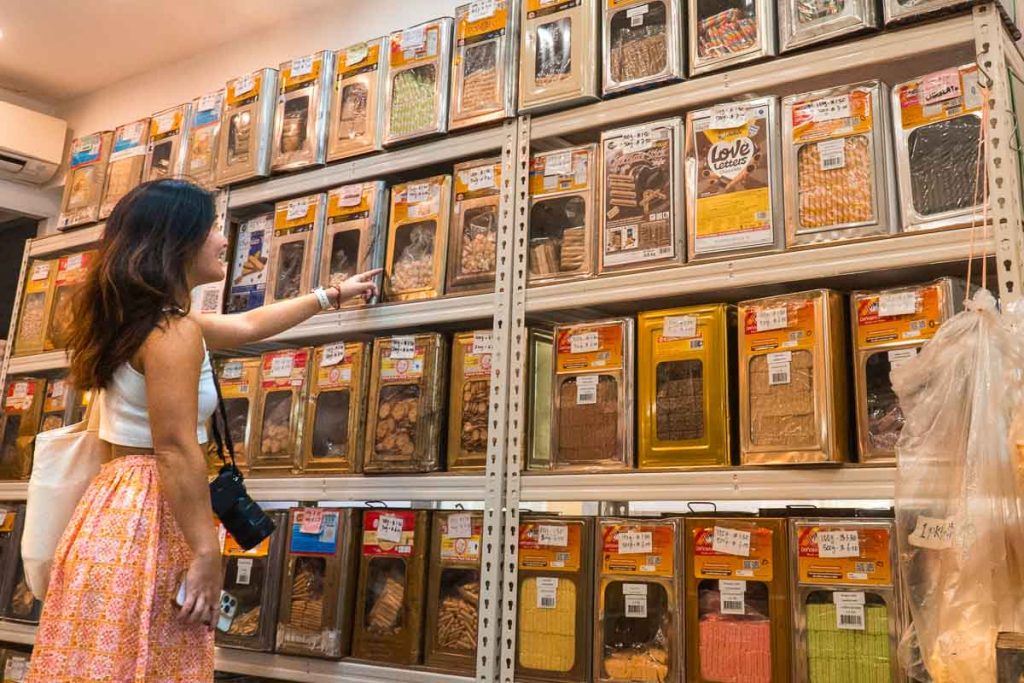
You don’t even have to wait till times of travel — I explored Ang Mo Kio with the same approach.
Adapting the Miyazaki Philosophy to my ordinary routines has sincerely brought unexpected bouts of joy to moments in my life that would otherwise be mundane. It aligns with The Travel Intern’s principle as well — that travel is most rewarding when you approach it humbly, by earnestly letting new people and places teach you as you go (as if you were an intern of the world) 🌏💫
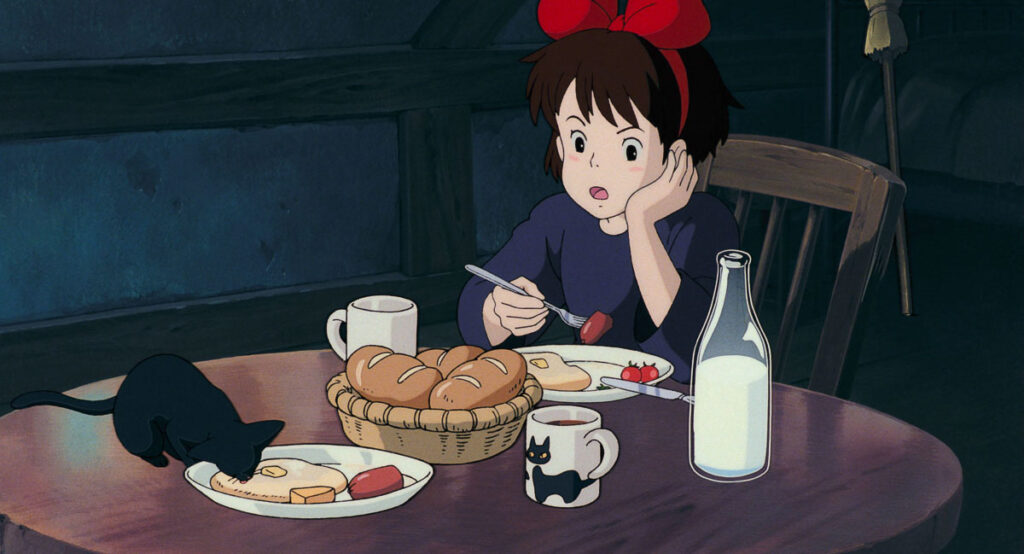
Kiki’s Delivery Service (1989). Photo credit: Studio Ghibli
In Japan, Miyazaki’s ‘The Boy And The Heron’ retains its original title: ‘How Do You Live?’ which I think summarises this all beautifully. The world can be so cruel and life can be arduous, but how do you live despite all circumstances?
Read also: 5D4N Solo Tokyo Itinerary — Ghibli-esque Attractions and an Escape to Karuizawa
“It is the fate of modern life that we repeatedly lose touch with: nature, the environment, the planet. But we try to regain it again and again. It’s like a circle. In children’s hearts and souls when they’re born into the world, nature already exists deep inside them. So what I want to do in my work is tap into their souls.” – Hayao Miyazaki


